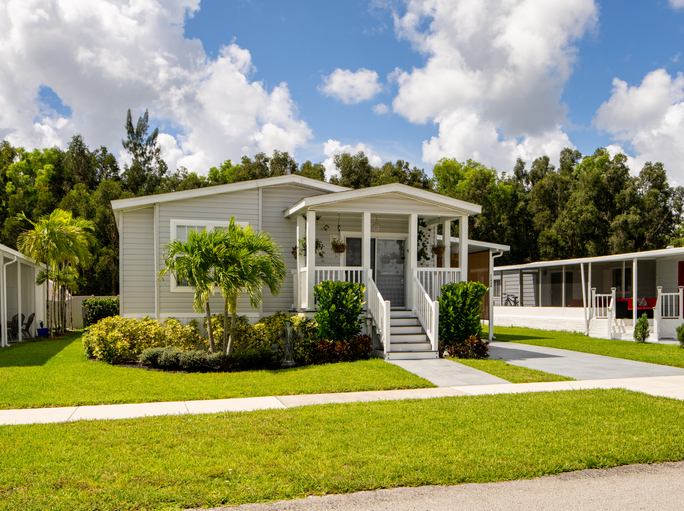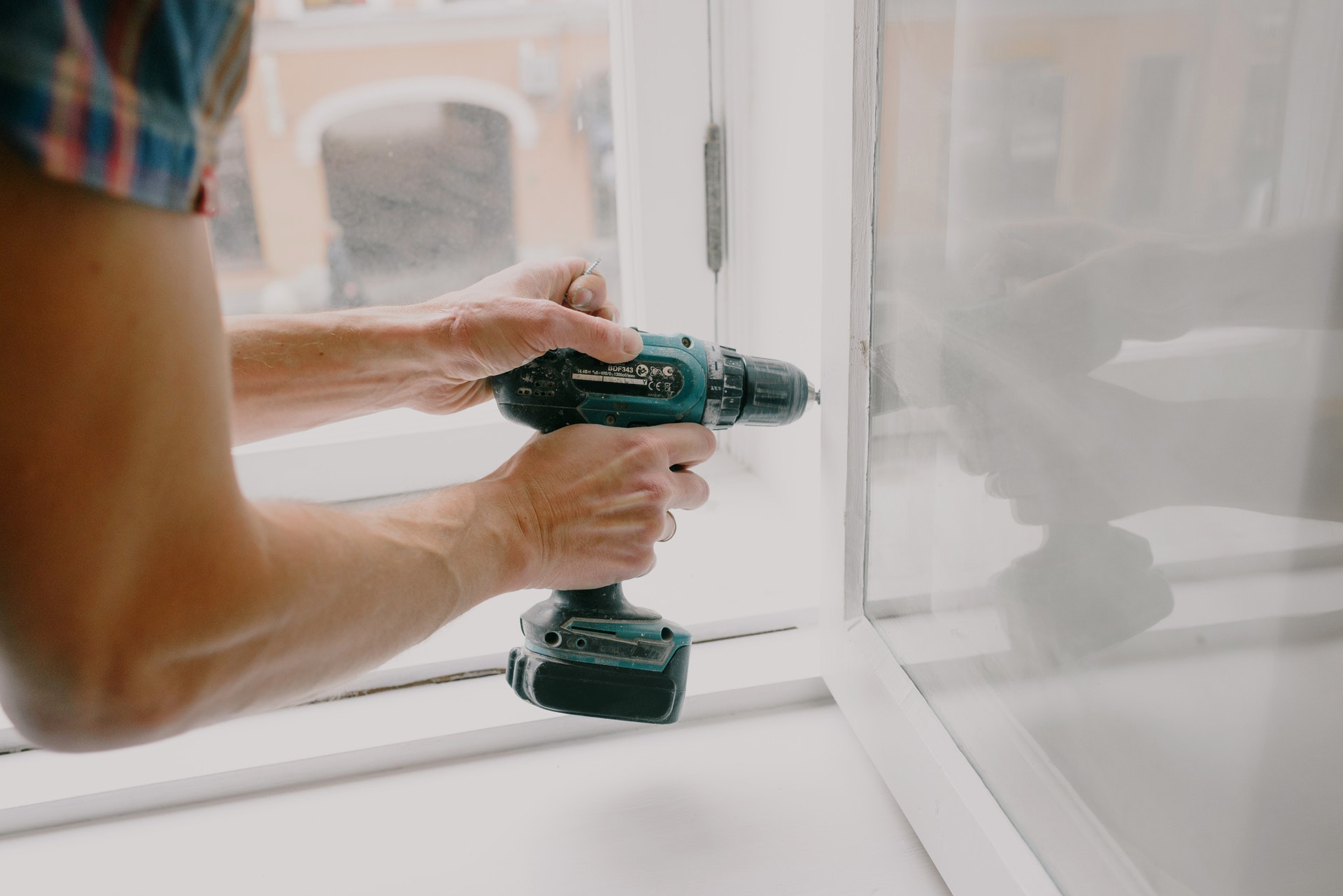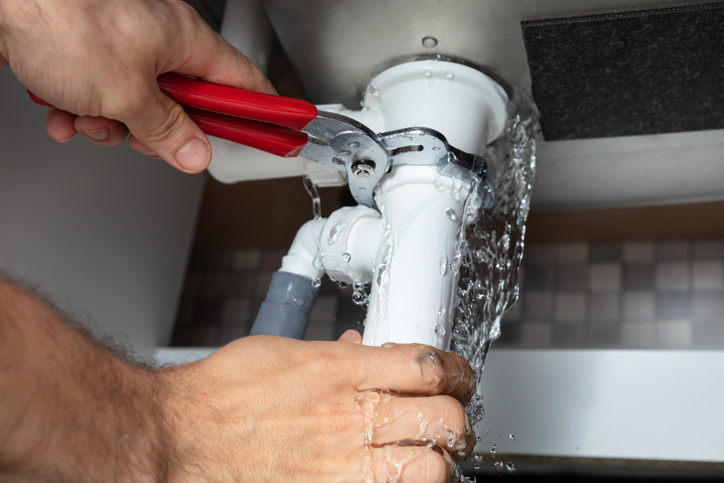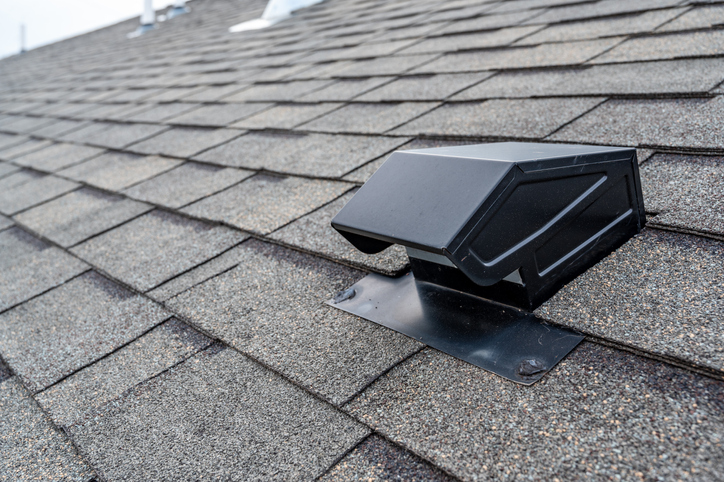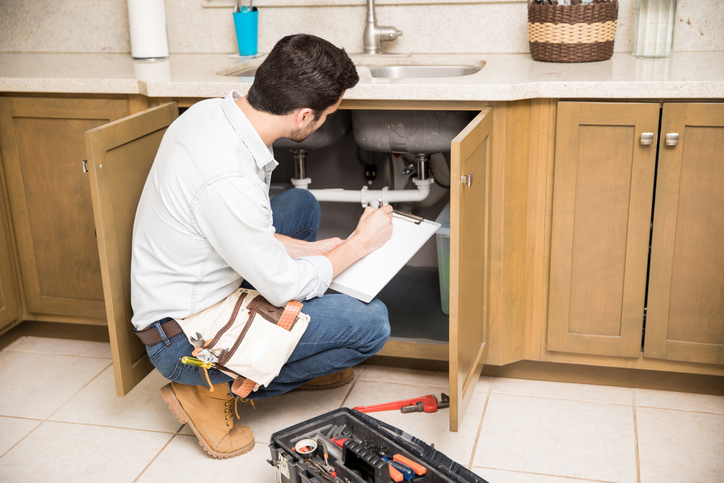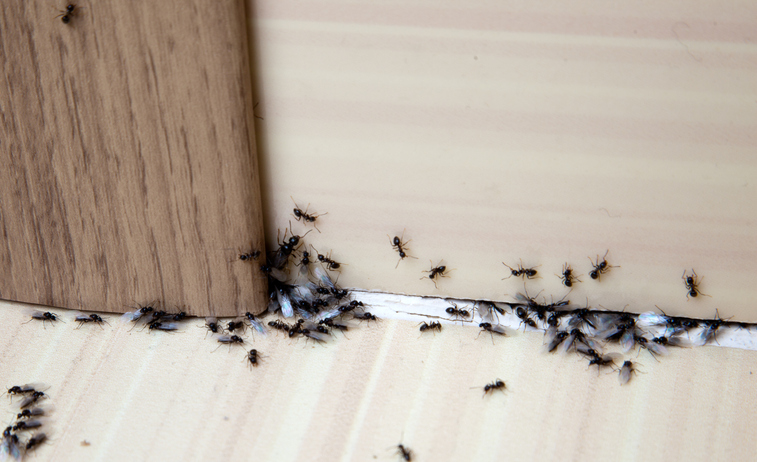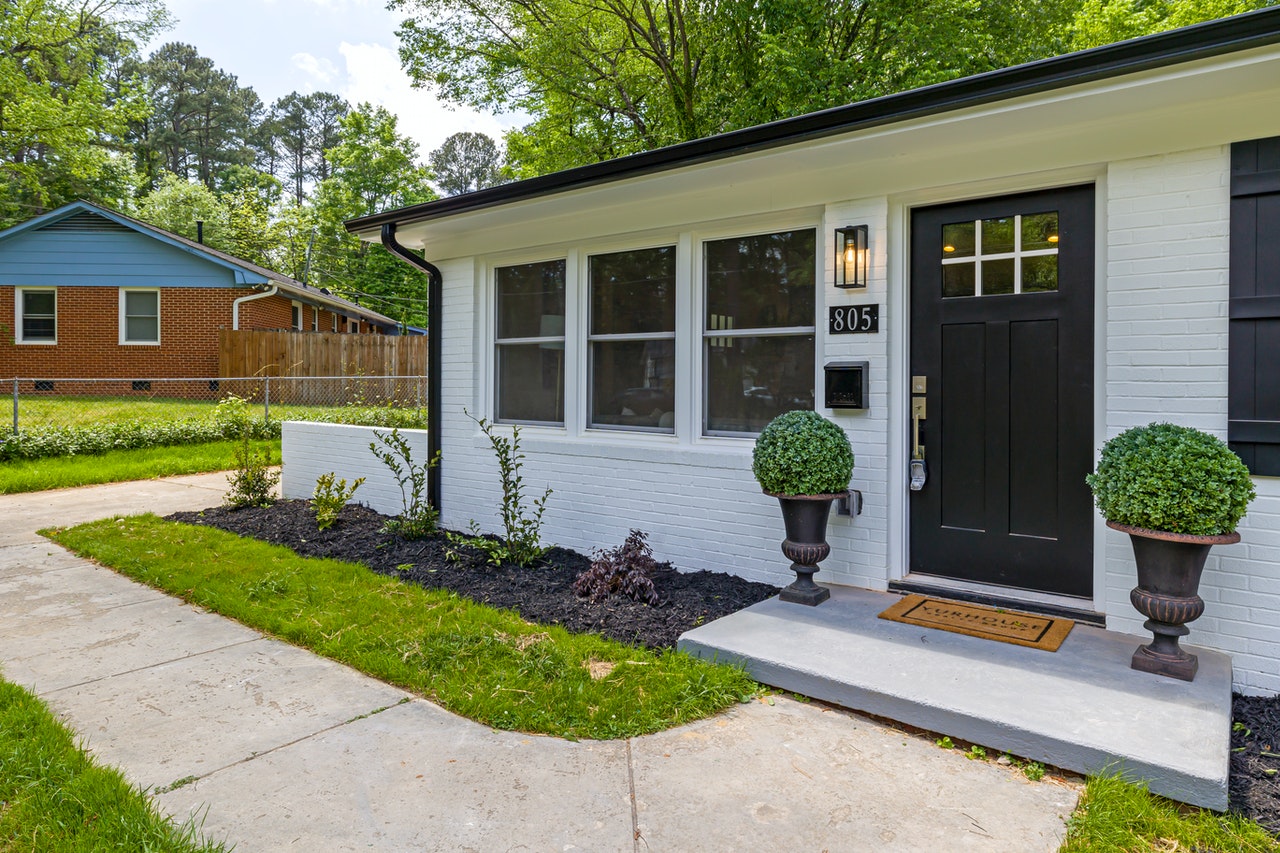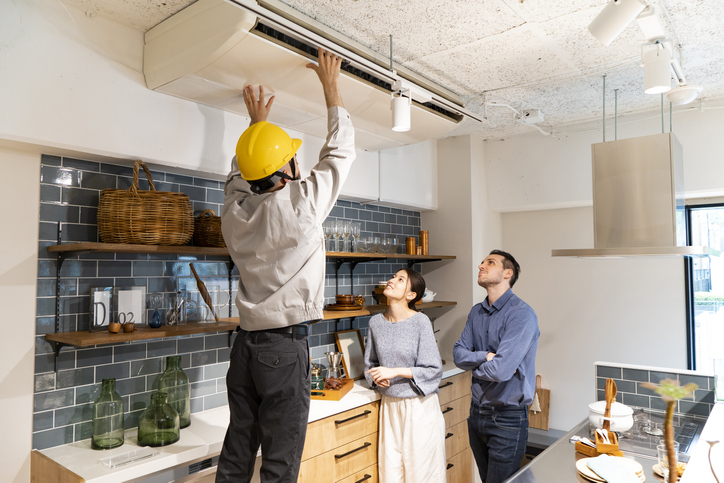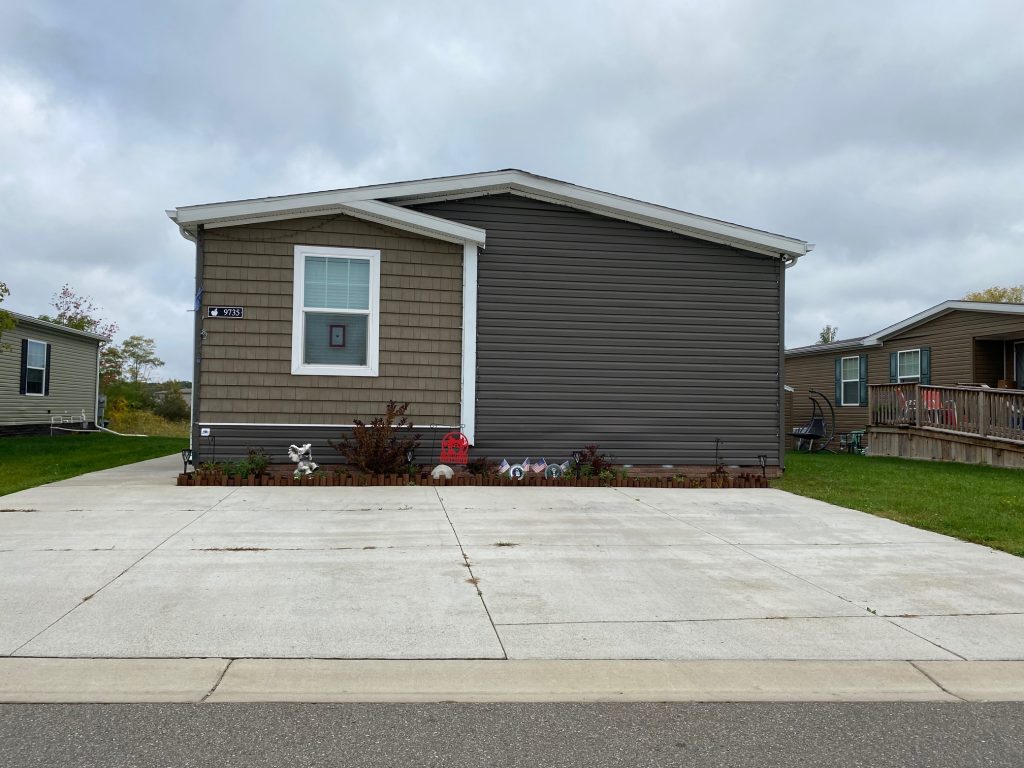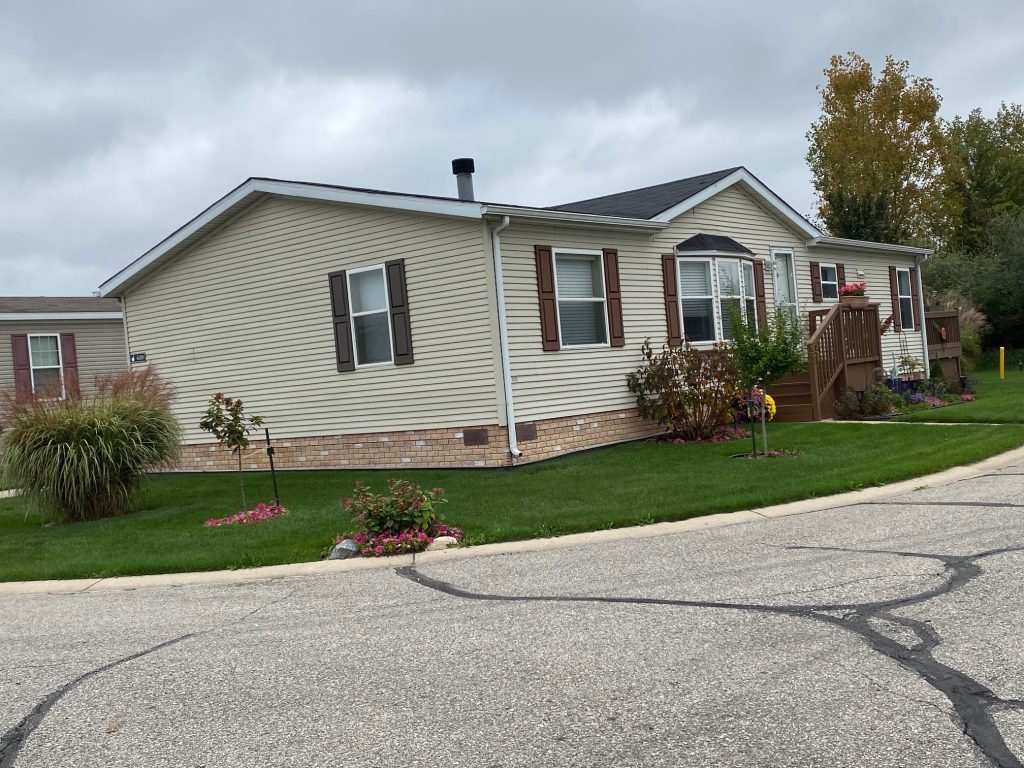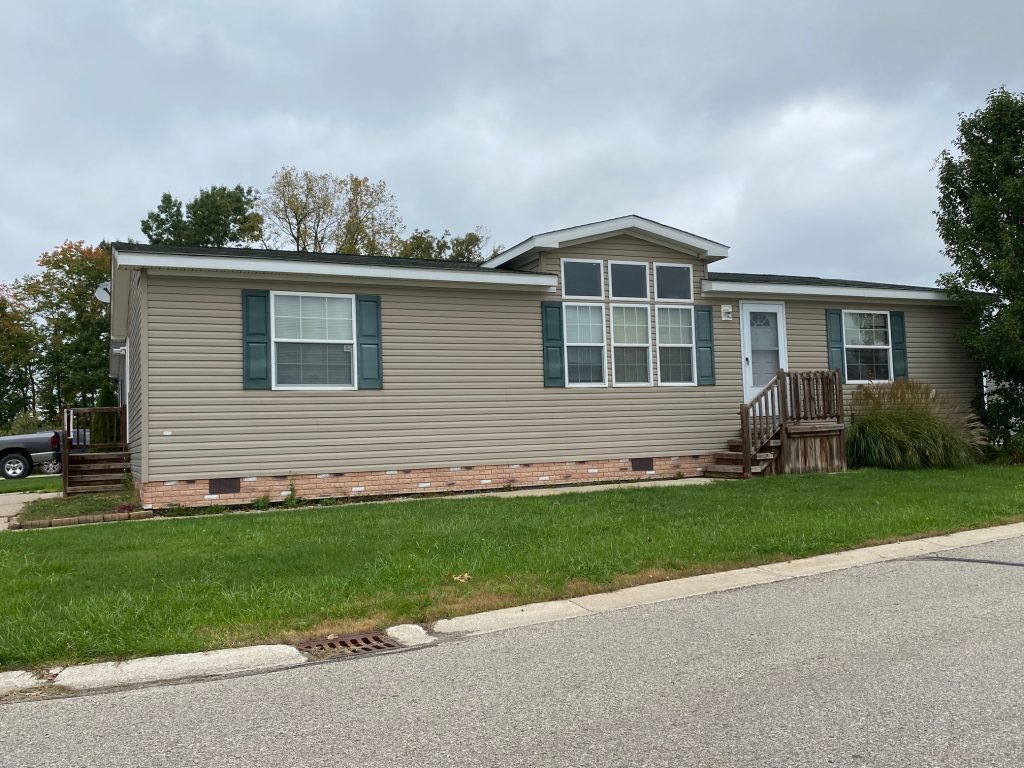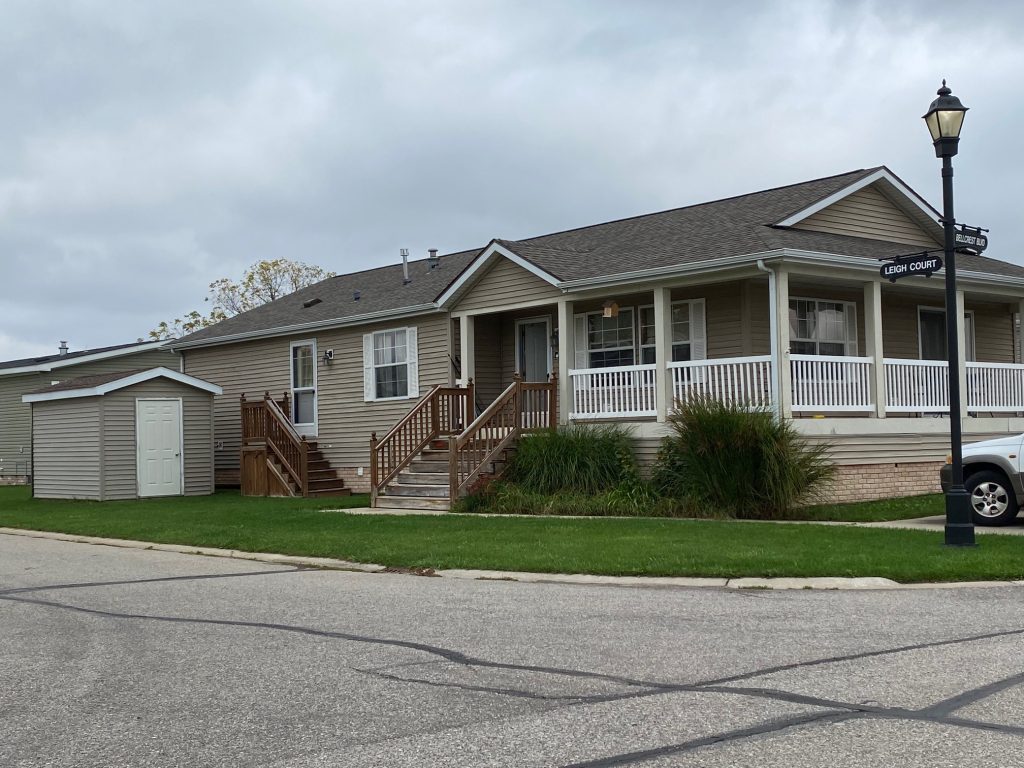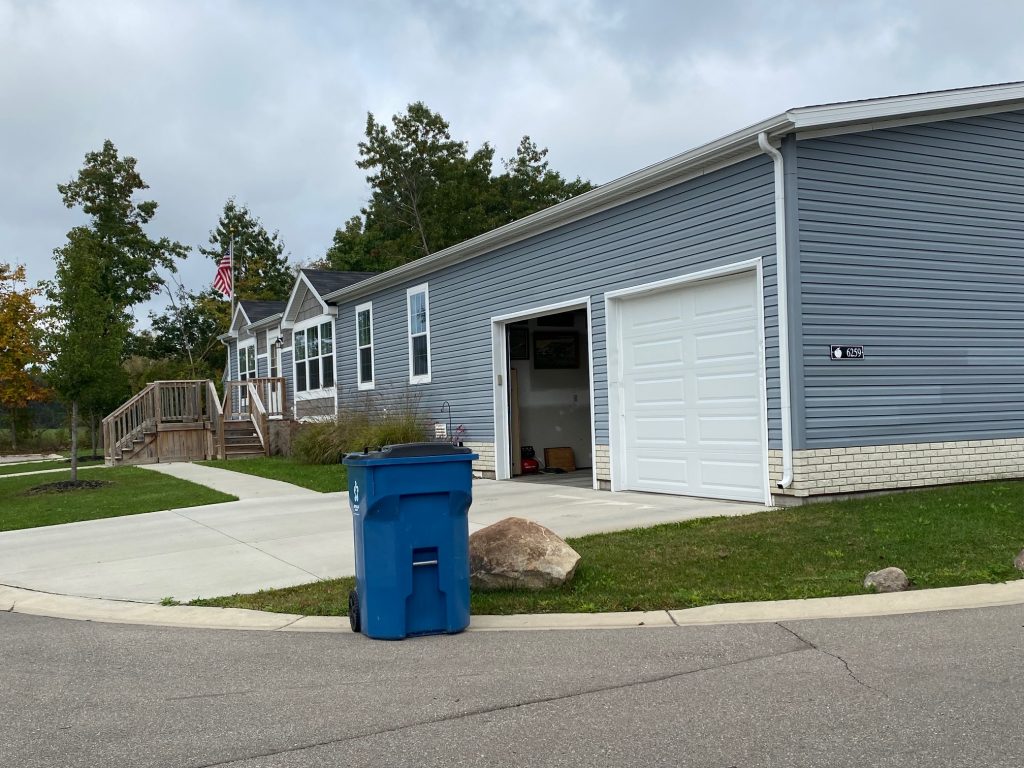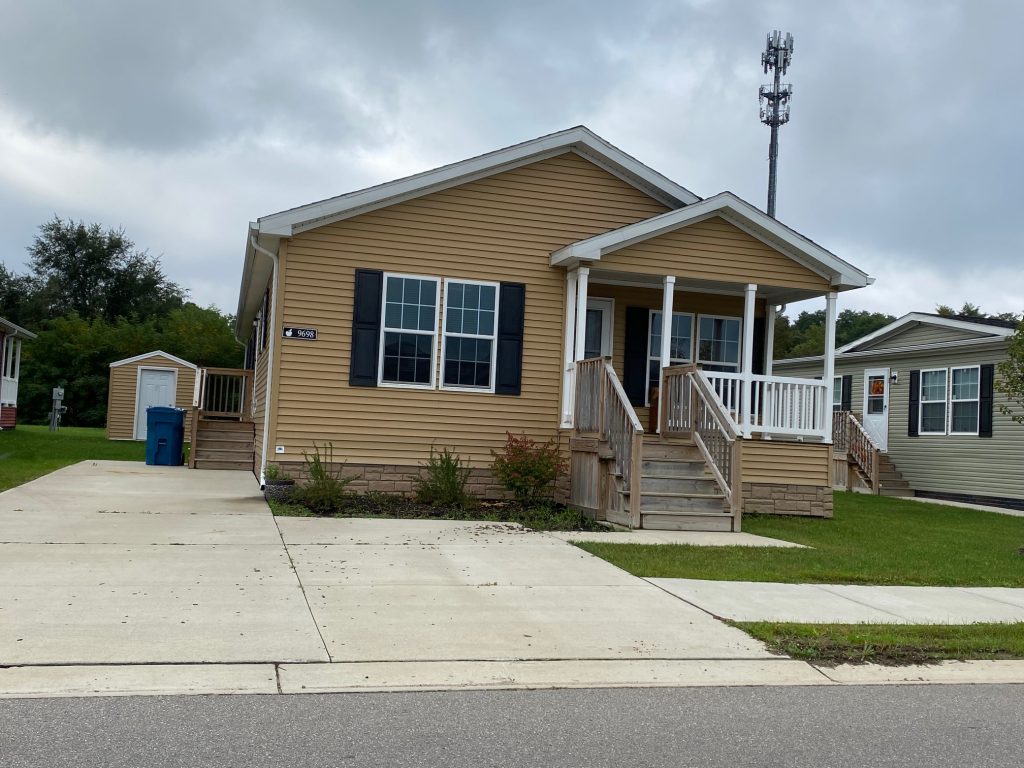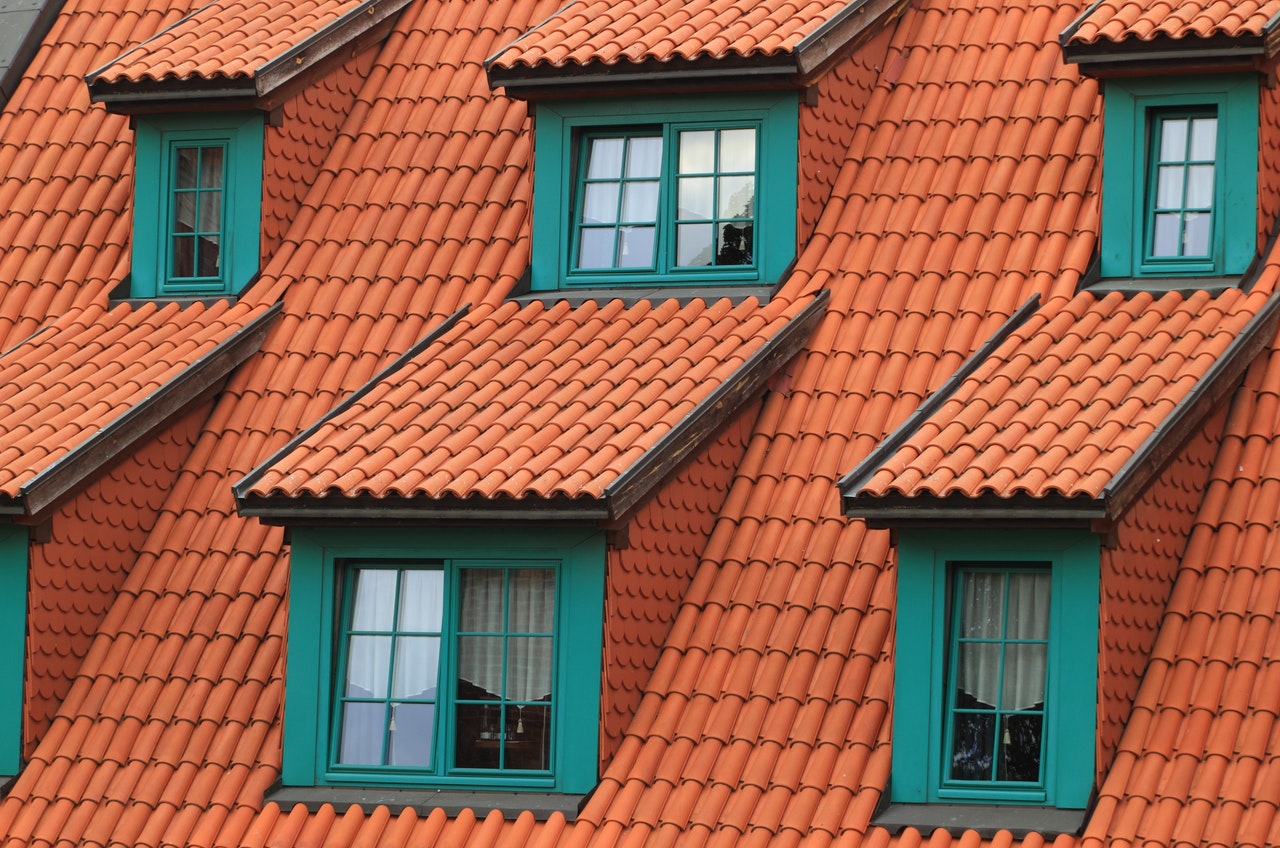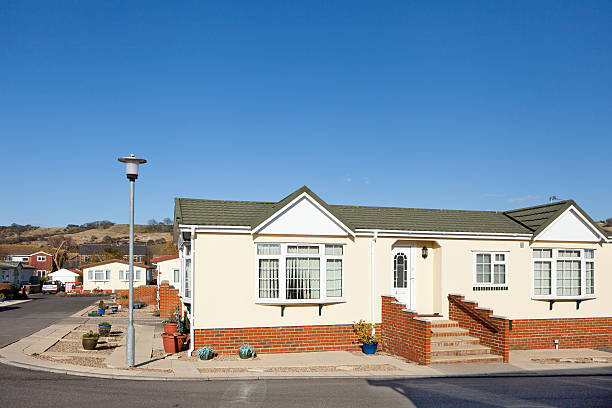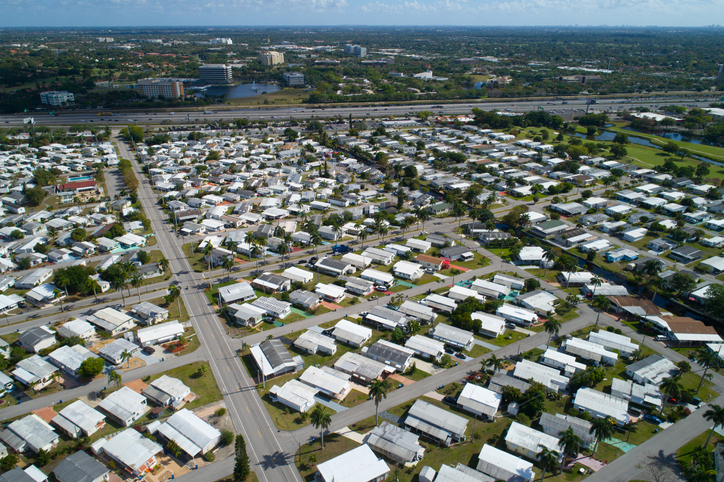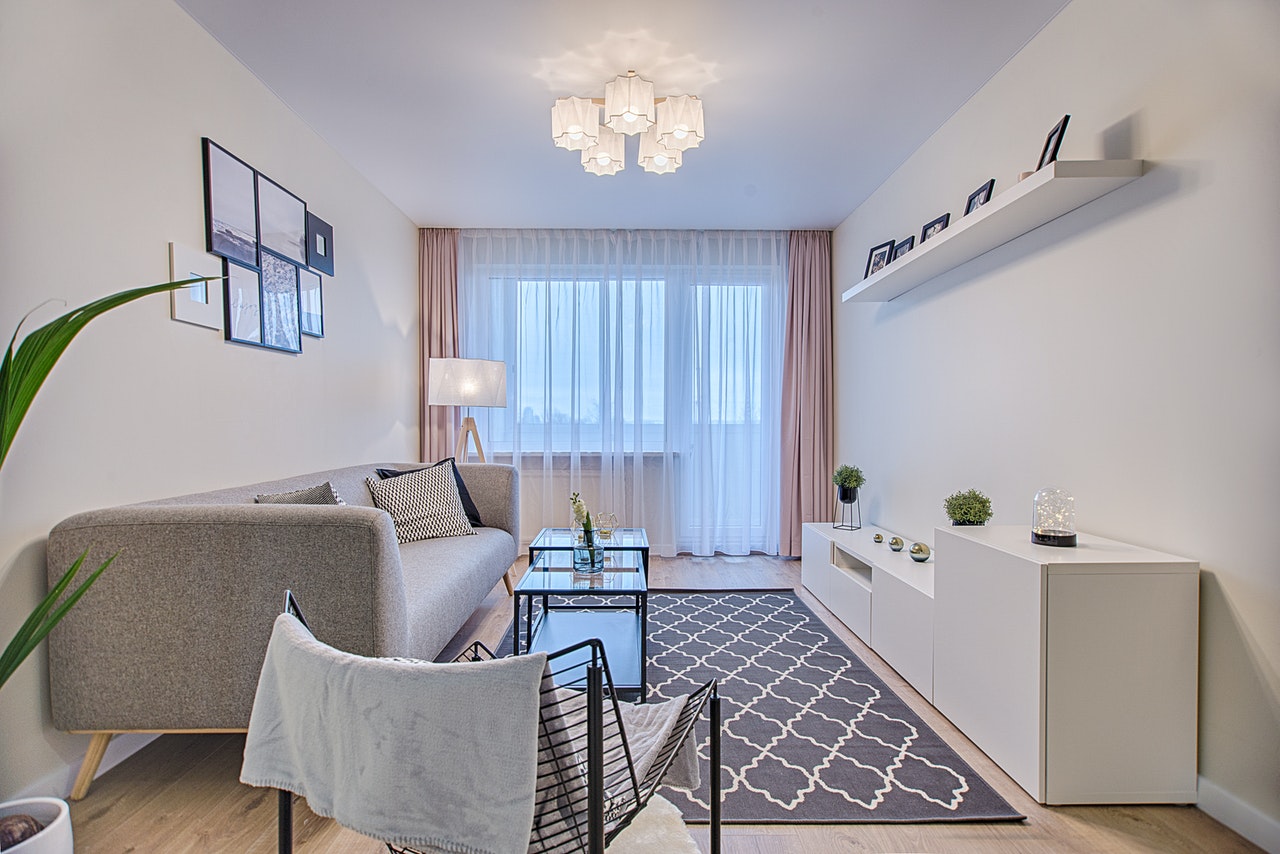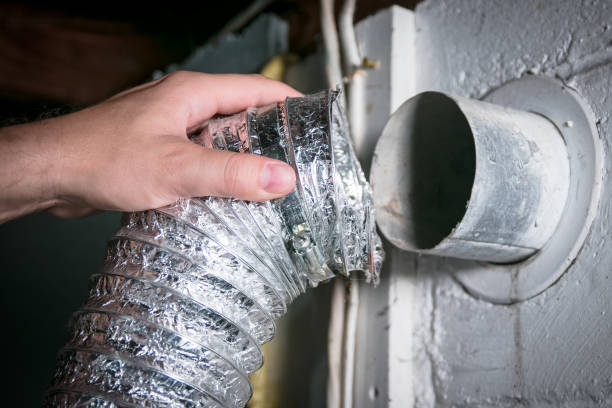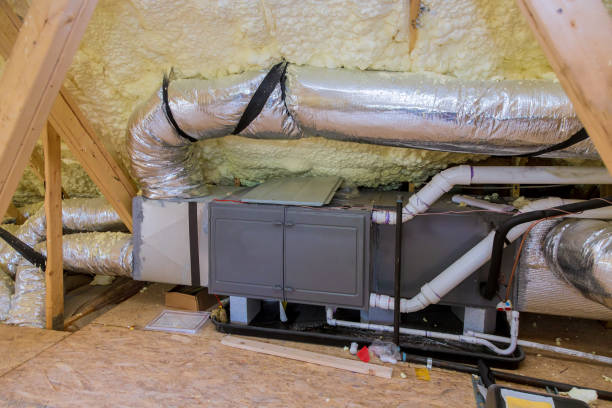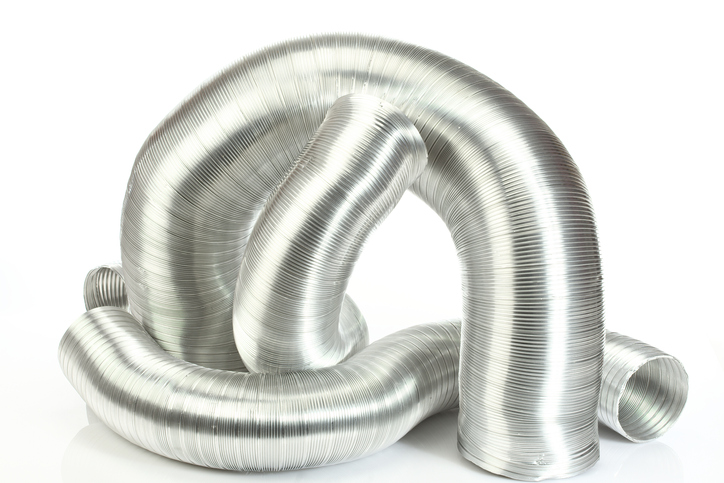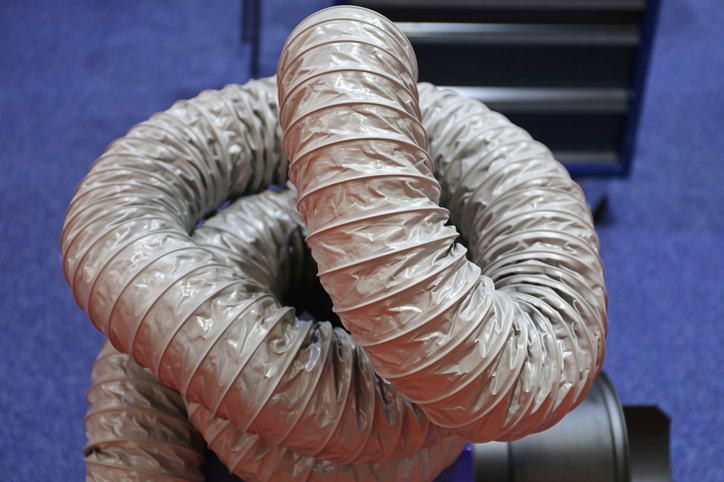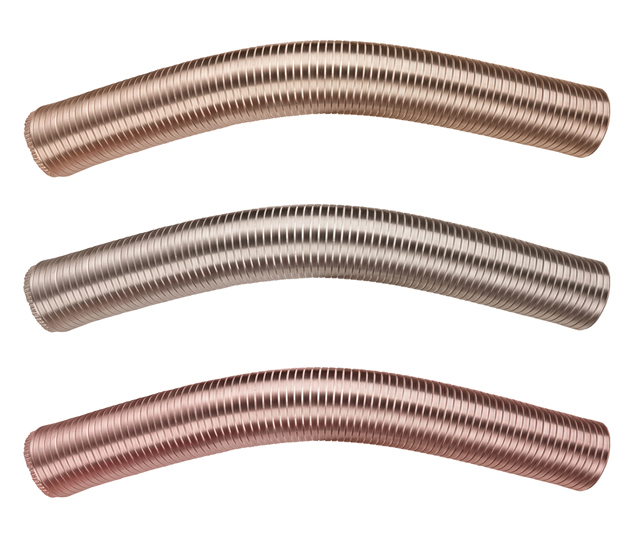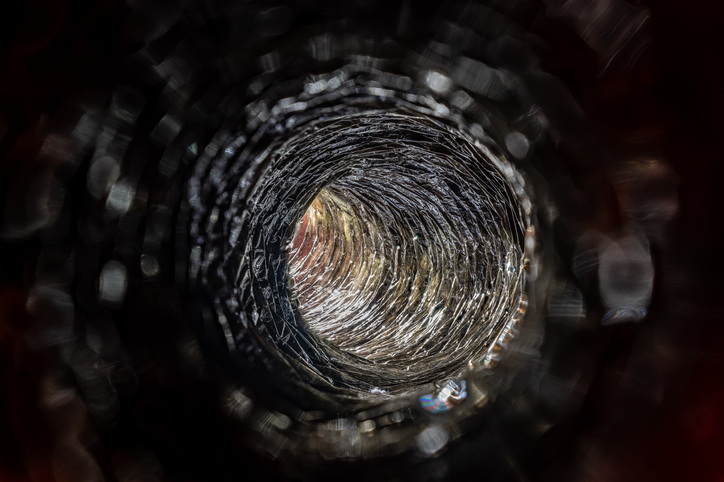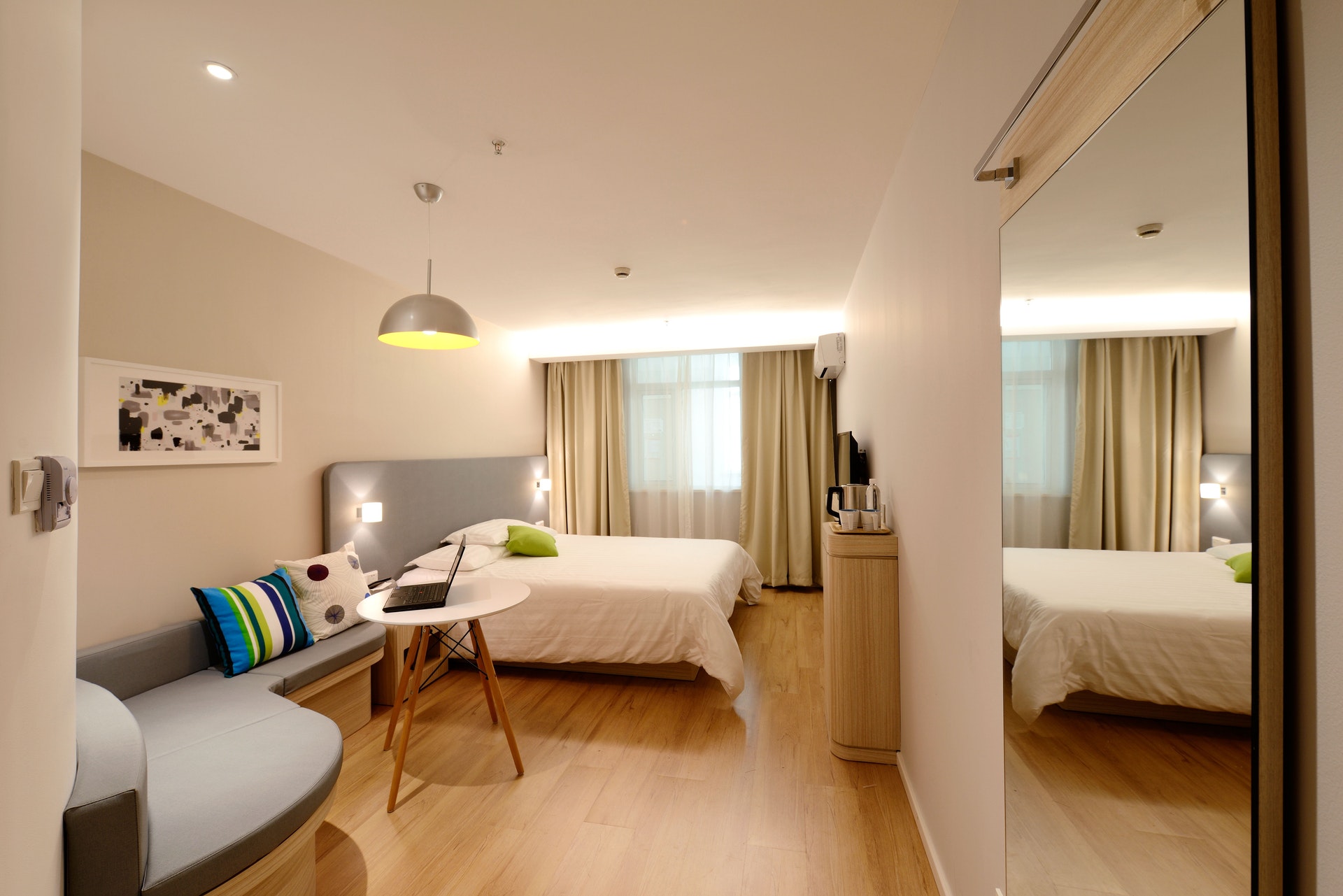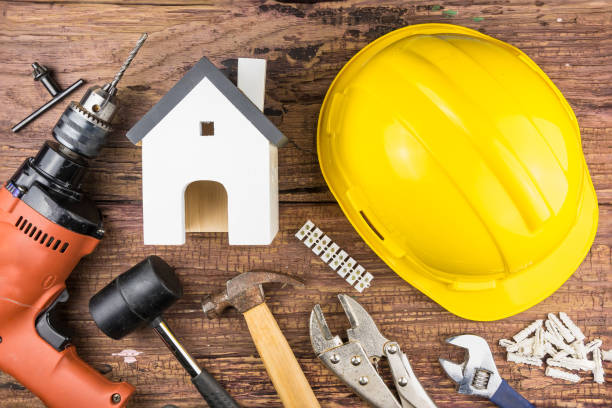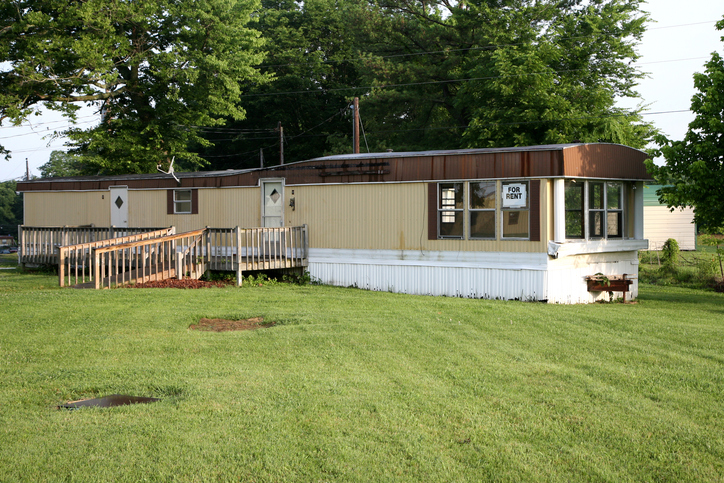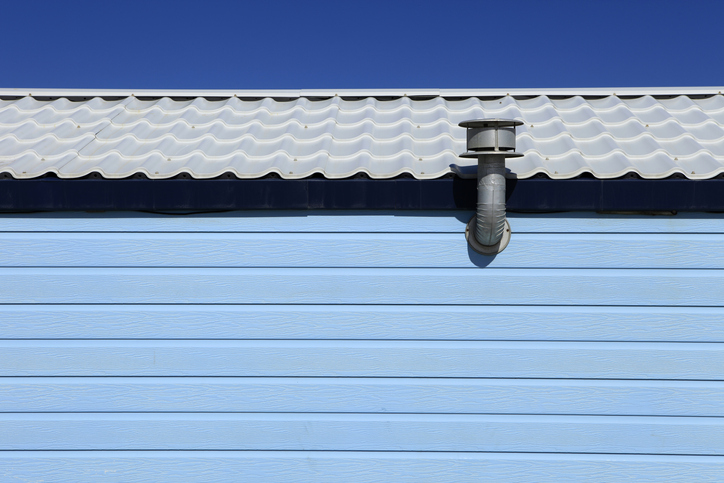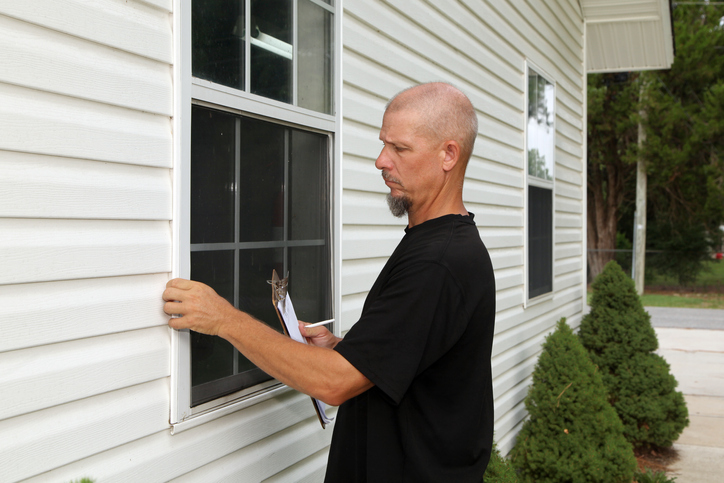4 years ago
·
Justin Becker ·
Comments Off on Wind Zone Ratings for Mobile Homes
When buying a manufactured home, most people are concerned with the home’s aesthetics, how their items will fit in the living spaces, or where to add new features.
That’s not all that’s important when you’re in the process of buying a mobile home. There is more to consider than just the aesthetics aspect of a mobile home. Before buying a manufactured home, you need to think about the wind zone rating.
For example, a mobile home in a lower-rated area might not withstand certain types of weather, so it’s crucial to understand where you live before making this type of purchase.
Wind Zone Ratings for Mobile Homes
Manufactured homes often suffer image problems with the media depicting them as easily demolished, but that’s not entirely true!
Most homes that face destruction are normally in wind zones where they are not supposed to be. So how do you know whether or not your mobile home is in the right wind zone?
Let’s discuss what you need to know about mobile home wind zone ratings in detail.
What is a Wind Zone?
Wind zone was created in 1976 by the Department of Housing and Urban Development (HUD) to ensure that manufactured homes are safe. One such regulation was the three wind load zones requirement, which homes must withstand.
You may wonder, what is a wind load? A wind load is the amount of force that a house must withstand to be considered appropriate for a specific zone.
In the 1990s, HUD updated the Federal Manufactured Home Construction Safety and Durability requirements to reflect new data on hazards, like snow, seismic activity, and wind safety, to ensure that the life expectancy of a mobile home was for the long haul.
According to the Manufactured Housing Institute, 22 million Americans live in manufactured homes, therefore wind zones are significant if you’re one of them.
The Manufactured Housing Institute (MHI) is the only national trade association representing the factory-built housing industry. With that said, the members of the Manufactured Housing Institute include home builders, retailers, community operators, lenders, suppliers, and affiliated state organizations.
Different Types of Zones
Most manufacturers will offer mobile homes based on their target market, and, as a result, the standard of their homes will vary.
Some manufacturers, for example, will build homes that can withstand wind zone III ratings, while others may not. As a result, you must ensure that your home complies with the standard requirements (three wind load zones), or your mobile home’s installation and clearance will be delayed.
So, what are these zones, you ask?
- Wind Zone
- Thermal Zone
- Roof Load Zone
Wind Zone
The United States is a diverse place, so it’s no surprise that different regions within the country experience different strengths and wind types.
In the Midwest, for example, the prevailing winds are from the southwest. These winds often bring in storms from Texas, as well as moisture from the Gulf of Mexico.
Depending on what time of year it is, you might experience different levels of wind. To make things easier, experts divide the U.S. into three wind zones.
Thermal Zone
Like a wind zone, a thermal zone is divided into three categories. So how are thermal zones determined, you ask?
Since the United States is a large and diverse country, the temperatures experienced in different areas of the U.S. will be diverse. The climate zones differ, determining what needs to be planted and grown where.
Roof Load Zones
The roof load zone determines how steep the roof of your home can be. The roof’s slope affects how much snow accrues on it during a storm.
The primary purpose of the roof load zone, also known as the snow load zone, is to guarantee that mobile homes are built to bear the weight of snow.
What You Need to Know About Wind Zones
Earlier, we established that there is a HUD Code for mobile homes, which includes wind zones. Therefore, any installation must be done in accordance with wind zone ratings.
Hopefully, by now, you understand the wind zone better. Let’s look at the different wind zones that are commonly talked about:
- Wind Zone I
- Wind Zone II
- Wind Zone III
Wind Zone I
Wind zone I is the most lenient area for building homes. It’s an area with winds up to 70 miles per hour.
In order to avoid destruction, the manufacturer must design homes that can withstand wind speeds up to 70 miles per hour.
The majority of the United States is in wind zone 1. This area includes most of the U.S.A, except for a few southern states. The northeast, the midwest, and the pacific northwest are all in wind zone 1.
Wind Zone II
Homes in wind zone II are built to hold out against wind speeds up to 100 miles per hour.
As a result, the United States government has designated wind zone II as an area where people are deemed to be at high risk of damage due to hurricanes.
A wind zone map shows the location of this wind zone II and the probability of your home being in this zone, depending on your proximity to either the Gulf or Atlantic coast. Although wind zone II is significantly smaller than wind zone I, it covers most parts of Florida.
Wind Zone III
As the wind zone number goes up, so does the wind speed. With that said, wind zone III homes must be built to withstand wind speeds of up to 110 miles per hour because hurricane-force winds are more frequent in these areas.
Wind zone III covers many of the coasts in the United States, which includes most of southern Florida, as well as all of Hawaii. In comparison to the other two wind zones, manufactured dwellings in wind zone III are more vulnerable to destruction.
When a home planned for zone I is built in an area with a higher wind zone, let’s say wind zone III, the most likely outcome is utter destruction when Mother Nature calls.
Finding Your Manufactured Home Wind Zone
Wind zones are an important aspect of construction, which is why you need to know about them.
Now that you understand the necessity of wind zone compliance (Federal Manufactured Home Construction), you may be wondering, “how do I find out what wind zone my home is in?”
The wind zone of your home can be found on the surface of the HUD data plate, which is typically hidden away in a kitchen drawer, behind an electrical box, or in a bedroom closet.
Is it proving difficult to locate your data plate? Simply search for the serial number on a HUD Certification Label, a metal plate that is fastened to the outside of your home. You can find out more about its wind zone safety and classification based on the serial number from your home data plate.
Frequently Asked Questions
Can you survive a tornado in a mobile home?
When you live in a mobile home, it is important to know the risks and what to do in the event of a disaster.
First, know that they are not designed to withstand most types of natural disasters. Second, if you see the storm coming and it’s likely to be severe (tornado or straight-line winds), make sure to leave your manufactured home for safety.
Not all manufactured home parks provide storm shelters, so if yours doesn’t it’s important to get out before the storm hits.
Can a mobile home be made hurricane proof?
It’s untrue to say mobile homes are hurricane-proof! No manufactured home is hurricane-proof, unless it’s built like a military bunker.
If you live in an area susceptible to hurricanes, you should have a hurricane plan for your family. One of the most important considerations is where to go after the storm hits because it’s unlikely that your home will survive.
Can you put hurricane windows in a manufactured home?
Yes! The best way to protect your mobile or stick-built home is with permanent storm shutters.
Storms occur year-round, but the most common time for them to hit is during hurricane season. These protective shutters are lined with vinyl on the outside of your windows and can be locked in place to protect against high winds, flying debris, falling objects, and shattered glass.
How much does it cost to hire someone to put up hurricane shutters?
Hurricane shutters (which can cost between $1,900 and $5,800, with installation) generally cost about $5-$60 per square foot for materials, and about $45-$100 per hour for professional labor.
Based on the size of your house, it should take roughly one hour for a professional to put up seven square feet of shutters (making fair estimates of the work to be done).
Can I install hurricane shutters myself?
Yes! You can install the shutters yourself. With do-it-yourself hurricane shutters, you can create a safe haven for your home.
Most shutters’ installation is straightforward and, thus, shouldn’t take you long to do. Shutter installation is a fairly simple process that you can do in a day with basic tools, though it might take longer depending on the setup.
Final Thought
When buying a manufactured home, it is important to understand the wind zone (wind zone I, wind zone II, & wind zone III). If you know what type of wind zone your manufactured home is in, you can save yourself some serious disappointment down the line.
A home in a higher wind zone (like wind zone II or III) will need additional reinforcement because this type of home is built to withstand hurricanes and tornadoes.
So, when looking for a mobile home, it is extremely important to make sure you examine information about the wind zone.
Read more
4 years ago
·
Justin Becker ·
Comments Off on How to Maintain a Mobile Home
A manufactured home is a “cheap“ alternative to a traditional home. With that said, there are many things to consider when deciding on which type of house to purchase, including the cost of maintaining each type of property.
In the past, mobile homes have been known to be small and not very appealing. Nowadays, however, these homes come in various sizes.
They can be single-section or multi-section buildings, and they vary in their aesthetics. Manufactured homes are a great option for people who want to create a beautiful home on a budget.
How to Maintain a Mobile Home
Mobile homes require routine maintenance, just like any other type of home, and homeowners need to be aware that they will have additional costs associated with their decision.
Just like any other investment, you want to make sure your mobile home is a good investment. With that in mind, it is important to dedicate some time and resources to maintain your manufactured home. By carrying out regular maintenance, you will keep your asset in good condition.
You might not think about it, but caring for a manufactured home is a lot more challenging than maintaining a regular house. There are a variety of tasks involved, and some of them will need to be done regularly.
This article will review some easy mobile home maintenance tips and tricks related to caring for your manufactured home, so you can maintain its value over time.
Check to See if Your Manufactured Home is Level
It is the responsibility of each homeowner to check their home for structural damage. This can be done by measuring the levelness of the flooring with a level or checking for any indication that moisture might be leaking into your home.
If a manufactured home is not properly leveled, it will have issues. Cracks will begin to appear in the walls, where leaks can seep through, causing mold and mildew. Doors and windows also won’t shut properly, causing drafty air to come inside.
Some maintenance services can help you with this, so contact mobile home setting professionals as soon as possible to minimize further damage to your manufactured home.
Proper Skirting Ventilation
Keeping a manufactured home clean and dry is a lot easier with skirting. The skirting prevents water from penetrating the home from the ground or from outside weather conditions.
A mobile home’s skirting or perimeter enclosure also adds curb appeal and maintains the structural integrity by insulating it from soil moisture, which can lead to deterioration.
The skirting must be safe, but it must also have proper ventilation/adequate venting to prevent dampness and mold from causing harm to the home.
There is a formula to assess if your manufactured home has proper skirting. The formula (1:150) stands for one square foot of venting required for every 150 square footage of space in your home.
Anything less than a square foot, per this ratio, will cause problems to your home.
Understand the Plumbing System in Your Home
There’s a lot to know about the plumbing systems of mobile and manufactured homes, but it’s easier than you might think if you’re familiar with traditional plumbing system concepts.
We’ll cover the basic information here and get you started on your way to understanding how these systems work.
First and foremost, in manufactured homes, the plumbing pipes are hidden beneath the structure and stubbed up through the floor, rather than being hidden within the walls, as they are in site-built homes.
There are various types of manufactured home plumbing systems that come with various water lines and piping. Plastic pipes and cross-linked polyethylene water lines (pex) are a popular choice because they’re durable, easy to work with, inexpensive, and easy to replace.
Most traditional home plumbing systems use galvanized pipe or copper water lines, which takes much more work to repair or replace when needed.
Make Roof Maintenance a Top Priority
The roof is one of the most important parts of your manufactured home. It protects everything inside, including the electrical wiring. Whether it’s metal roofs or any other type, maintenance is necessary.
So, how long does a roof last on a manufactured home? It all depends on how you maintain it. If you want your manufactured home to last longer, consider prioritizing the upkeep of it’s roof.
Many mobile homes have flat roofs. This creates the need to account for snow accumulation. Roofs with low slopes or no slope are especially vulnerable, particularly in harsh winter climates.
Heavy snow can lead to property damage, which needs to be addressed immediately. If there are broken or missing shingles, repair them immediately to avoid further issues.
Gutter cleaning is another strategy to extend the life of your roof. Allowing clogged gutters to occur will almost always result in water damage and leakage.
Similarly, have the roof coated with a durable roof coating annually, and be certain you’re using the proper coating. For example, roofs made of PVC or rubber (EPDM) cannot be coated with asphalt or aluminum coatings.
Keep Your Home Clean
It’s easy, but important, to take care of your manufactured home by making sure the interior is tidy and free of clutter, as well as checking up on the exterior of your home.
Debris is a form of waste that accumulates around your home. When you pile up dirt and debris in one place, it can collect large amounts of moisture over time, leading to significant water damage.
You want to avoid this by cleaning up any piles of dirt and debris when they start to build up.
With that in mind, set aside time to undertake a thorough cleaning once in a while to keep your mobile home looking nice.
If your home has vinyl siding, you can clean it up with water and detergent. However, if your home has a presence of mildew, you can use a (1:3) solution of chlorine bleach and water.
Please note, be careful when mixing bleach with other chemicals since it can be dangerous.
Check Your Utility Bills
Mobile homes are a great way to save money on a new home. When it comes to manufactured homes vs. stick-built homes, mobile homes tend to be more affordable and they also tend to offer a more flexible payment plan.
With that said, sometimes these affordable options come with an increased monthly bill that is not typical of living in the area. If you find that your monthly expenses have increased significantly, that could mean that there’s a problem with your air conditioner or heater — or worse.
Regular mobile home maintenance of your heating and cooling systems is essential when it comes to saving money. You can catch any problems before they become worse and more difficult to fix by performing routine checks. This will also reduce the risk of experiencing an unexpected outage or breakdown in your home.
Learn How to Inspect a Mobile Home
As a homeowner, you should be mindful that you are the best person to know what’s happening in your home. You can do an inspection of your home regularly to better inform yourself of possible upcoming issues that may arise.
Although hiring an expert is suggested, understanding how to inspect can enable you to spot problems before they occur or worsen, which can ultimately save you money.
The importance of learning how to inspect a mobile home stems from the fact that many people do not know what they are searching for when inspecting for the first time. As a result, they may unintentionally skip a problem.
Why You Should Maintain Your Home
In a home, there are many things to take care of. Not only is it important for your equipment to look good, but if any of the appliances malfunction, you could be stuck with a costly repair.
By performing regular maintenance of your items, you will be able to prevent things, like:
● Roof leaks
● Pipes freezing
● Plumbing clogs
FYI: check out our guide on how to unfreeze pipes in a mobile home here.
With that in mind, here are some important reasons why it is crucial to maintain your mobile home regularly:
Saves You Money in the Long-Term
Outdated equipment leads to high energy consumption and wastes precious resources. Want to know how to make a mobile home more energy-efficient? Start by taking care of your appliance repair difficulties, or else you’ll end up paying a lot in utility bills every month.
Similarly, an old water pipe is better off replaced before it bursts. Leaking pipes will leave you with high water damage repair costs if left unrepaired.
Preventative mobile home maintenance can help you save a lot of money on repairs and damages. As a result, resolving a problem as soon as possible will help you save money in the long run.
Increases the Value of Your Home
Homeowners are always looking for ways to increase the life expectancy of a mobile home. Apart from mobile home renovations and upgrades, another effective way of increasing the value of a mobile home is to maintain it properly.
This includes taking care of any problems that you notice before they worsen. If you ignore them, it can cost a lot more to fix them later.
If the house has not been maintained for some time, you will have a lot of dents in your home inspection report. A list of dents on the property is one of the first items on the report. Weather, insects can cause dents, or simply neglect.
Protect Your Home from Secondary Damage
Secondary damage is the type that occurs due to previous damage to the property.
This can include everything from a leaky roof to a cracked foundation. Secondary damage can be very costly and time-consuming to fix, but you must not just ignore these problems, as they can lead to more costly repairs down the line.
Mobile Home Maintenance Improves the Living Experience
There are many benefits to living in a house with a quiet air filter or furnace.
This includes the obvious benefits of not having dust spewing out of an air filter or furnace every other second. Another added benefit is that these systems are quieter than they have ever been before.
Home maintenance can be a hassle for homeowners. From repairing creaky doors to fixing leaky roofs, these upkeep tasks are often overlooked due to not knowing there was even a problem in the first place.
With that said, not maintaining your home will result in much more difficult problems to fix later on down the line.
Maintaining your home regularly not only allows you to enjoy the peace of a well-cared-for home, but it can also save you money in the long run.
Helps to Keep Away Pests
In a house, the number of bugs can be seen as an indicator of how poorly maintained the house is. This is because there are fewer bugs in a house that is well-kept and maintained, and more bugs in a house that is less kept-up and maintained.
Bugs are a mainstay of any home. They come in all shapes, sizes, and colors, from the common housefly to the exotic fruit fly.
Regardless of their type, they love nothing more than making themselves at home in a filthy kitchen or on your bedspread. So make sure you know how to deep clean a mobile home in order to maintain it properly.
Final Thought
A properly maintained home should be among every homeowner’s top priorities. That said, there are many benefits to maintaining your mobile home, and one of them is that it can increase the value of your property.
Proper maintenance also adds curb appeal to your property, so make it a priority to maintain your home.
Read more
4 years ago
·
Justin Becker ·
Comments Off on Simple Landscaping Ideas for Mobile Homes
Whether you reside in central Florida or Michigan, the best landscaping ideas for mobile homes can increase your manufactured home’s value and improve its curb appeal.
Landscaping means that you’ll spend more time enjoying your small yard and less time working on it.
Since most mobile home communities include mobile home maintenance tasks, such as grass-cutting, in your rent, you can spend more time giving your modular home low-maintenance landscaping. This makes your mobile home living experience worthwhile.
Here, we consider simple landscaping tips to give your manufactured home more colorful and personal touches.
Simple Landscaping Ideas for Mobile Homes
Let’s look at a few ideas for landscaping manufactured homes:
Sunny Landscaping Ideas
Sometimes, it’s hard to landscape in mobile home communities, compared to private land, since there are rules that you must abide by. You also wouldn’t want to spend so much on trees and plants on land that does not belong to you.
With that said, it’s possible to use a small budget and still make your mobile home exterior beautiful. We recommend that you landscape the perimeter of the whole property to make it solid.
Employing varying heights will add interest. Lanterns add light with style, while rocks add texture. Ensure you utilize decking and pathways well.
My Mobile Home Makeover has beautiful examples of landscaping ideas for mobile homes.
Shady Landscaping Ideas
If you reside on a shady property, flower beds, grasses, and evergreen shrubs are the best ideas to add texture. Mature trees are a plus too, as long as they’re pest-free and healthy.
Your deck is a perfect place to have potted plants. We suggest that you employ shrubs, trees, and plants native to the area.
A flower bed is also very helpful, just ensure that you implement raised garden beds.
Water Feature Ideas
If you install a water feature, you’ll add tranquillity, sound, and interest to your yard. However, there is more to it than just digging a hole and adding black plastic down.
Proper filtering, chemicals, and circulation are also required. To appear as though it belongs to your yard, add plants and rocks around it to give a more natural feel.
If you want to install a pond, we recommend installing a larger one for stability. A large pond actually has less maintenance involved. Implementing a smaller pond isn’t perfect for circulation and won’t create enough room for a natural ecosystem.
After the right combination of animals and plants have made the pond their home, you’ll be forced to use fewer chemicals. Ensure you have the pond deep enough for fish to winterize properly too.
Mobile Home Parks
You can still landscape your mobile home even when you live in a mobile home park, but first you need to check the park rules to see whether there are prohibited species.
In most cases, fast-growing plants and species having large root systems aren’t allowed since they can damage the foundation or plumbing pipes. You should also avoid invasive plants.
In this case, we recommend slow-growing shrubs and trees. You can also consider perennials that are native to your area.
You can soften the ‘boxiness’ of your mobile home with natural and exterior architectural elements, like shrubs, flower beds, and trees. With the right plants, you can also add dimension with ease.
Another idea is to employ containers to plant anything you want in them. This allows you full control of the growth and roots.
Hardscapes and Skirting
Having built-ins, such as walkways, patios, and stairs, take the ‘mobile’ out of a mobile home. If you plan on sticking around for longer, retain the walls to hide skirting around your manufactured home.
Perfect skirting is how to keep a mobile home cool in the summer during extreme temperatures or from over-warming your manufactured home.
Hardscaping includes a built-in fire pit, patio, and an outdoor barbecue. Lantern posts, tiled steps, and ceramic planters are also fantastic touches.
Handy Landscaping Tips
You must understand the soil type you have: alkaline, acidic, or neutral. Different plants thrive in different soil types.
The below tips can help you with mobile home landscaping ideas:
Elements for Beautiful Landscapes
You should use four elements, which include light, texture, color, and height in your landscaping project. Your yard landscaping ideas will be perfect if you incorporate these elements.
Test the Soil
To determine whether your soil is alkaline, mix it with distilled water and add a little vinegar. If the soil fizzes, then it’s alkaline.
To determine whether the soil is acidic, mix it with distilled water and add baking soda. If the soil bubbles, then it’s acidic.
If there is nothing with both tests, your soil is neutral.
Annuals vs. Perennials
Professional landscapers recommend having perennials for the majority of your mobile home landscaping. However, they also advise you include annuals throughout your beds to change things up and for dramatic effect.
Some annuals are too beautiful not to have. The good thing about annuals is that they’re affordable.
Herb Gardens are Ideal for Small Areas
Apart from herbs being beautiful, you can also use them as natural medicine, for cooking, and beauty.
Rain Barrels are Perfect
We recommend that you use a rain barrel in order to achieve drip irrigation. This will save you money when it comes to watering plants.
Marigolds Keep Mosquitoes Away
It’s scientifically proven that marigolds keep mosquitoes away. Trim the deck with marigolds or add containers around the lounging areas and doors.
Consider Composting
Composting is among the best landscaping tips you could ever consider. Here, you just need to set aside a small space beside your mobile home.
This is the perfect place to dispose of your landscaping scraps, grass, or anything else natural, such as dirt and bark.
While starting a compost, lay a back tarp over it to kill bacteria and fungus.
Begin with a Plan
Always begin with a drawn out plan using a computer or on a piece of paper. A plan makes it easier for you to figure out where to put things. It also becomes easier to research native plants within your area with a plan.
We recommend having taller plants in the middle or back, and shorter ones in the front. Use a tree or an arbor to add height to your area. For beauty and safety purposes, add solar lights on the pathways. These lights also make a mobile home more energy-efficient.
Use some mulch, too. Mulch helps plants to thrive and keeps moisture in the ground.
Conclusion
With proper landscaping, you’ll spend more time enjoying your yard and less time working on it. You should, therefore, invest time in employing low-maintenance landscaping.
Follow the tips we have recommended above to make your landscaping project successful. If possible, seek help from a professional.
We hope you identify the perfect plants and the right spot to place each. This will make your mobile home living experience much more worth it.
Read more
4 years ago
·
Justin Becker ·
Comments Off on How to Make a Mobile Home More Energy-Efficient
Mobile homes or manufactured housing are popular for their affordability, but on the same note they are thought of being non–energy–efficient, thus incurring high utility costs.
Typically, according to the U.S. Department of Energy, manufactured homes have utility expenses that are up to 50% more than regular site-built residences of the same age and size.
The older the mobile home, the more a homeowner spends on energy bills/energy costs. This is why the HUD Code was passed, requiring manufactured homes to be built with more energy-efficient features.
How to Make a Mobile Home More Energy-Efficient
Fortunately, there are techniques to improve your manufactured homes’ energy-efficiency that will not only save you money, but also make you feel good about your purchase.
The best part about these methods is that most are do-it-yourself, with the exception of a few that require professional assistance. Generally, it is recommended to hire professionals to inspect your manufactured home.
An expert will assess your home’s energy-efficiency and make the appropriate recommendations. If you have a tight budget, this will assist you in finding cost-effective solutions to your energy issue.
As a result, here are some suggestions for lowering your energy bills and making your modular home/mobile home more energy-efficient.
Replace Your Light Bulbs
It’s vital to replace incandescent lights in your mobile home with LED bulbs if you want to save money on your electricity bill. LED lights are energy-efficient and provide a brighter lighting effect in your mobile home.
LEDs have the potential to boost your home’s energy-efficiency by over 85 percent, which can lead to a significant savings. The nicest thing about LEDs is that they don’t need to be replaced as frequently, saving energy and money in the process, unlike incandescent lights.
For example, LEDs can last up to 50,000 hours, compared to traditional lights that can only manage about 1,000 hours before you replace them.
Repair or Upgrade Kitchen Appliances
Your kitchen appliances are also energy guzzlers, consuming more energy and consequently accounting for 20 to 30 percent of your monthly utility cost.
To make matters worse, manufactured homes with rusty or old appliances are known to be energy-inefficient, which means that if you don’t fix or upgrade them, your cost will increase.
Your dishwashers, refrigerators, and other appliances, to name a few, are all items that should be inspected and repaired on a regular basis.
Here is one of the great mobile home maintenance tips, regular maintenance is required if you want to save energy or use it efficiently. You should clean and dust your appliances as needed to save the cost of replacing them, which could be substantial.
Improved Insulation in the Belly, Walls, and Roof
In general, the older a mobile home is, the more likely it is to be inefficient with its energy use. To be honest, an older home’s insulation is barely adequate to keep it from losing or trapping heat as it should.
Even so, old-fashioned insulation in manufactured homes can be hazardous to your health, which is why you should replace or eliminate it. Learn here how to super insulate a mobile home.
If this is the case, you should work on your home’s belly, walls, and roof right away to improve its energy-efficiency.
With that said, you should be aware that there are several types of insulation, so you should research your alternatives before determining which one best suits your requirements.
If you have air leaks or holes in your home’s walls, you should address them right once to keep the air inside. You should also be aware of how long a roof will last on a manufactured home.
Consider Solar Energy for Your Mobile Home
You can save energy and a lot of money by using solar energy instead of paying for power. The only catch is that purchasing and installing them comes at a cost. It may be significant, but in the long run it will be worthwhile.
Solar panels can be installed on your mobile home, but you must first conduct thorough research into the firms that manufacture the best solar panels for mobile homes/manufactured homes.
The fact that there is a considerable initial cost should not deter you from going solar. There are programs provided by the state, local governments, and utilities that can assist you in covering the costs.
And if you have outdoor lighting installed, make sure to have them checked by lighting professionals so you can be sure that they are all energy-efficient.
Repair Your HVAC System
In a mobile home, heating and cooling are essential, but if you can’t repair the HVAC system when it begins to fail, you could be wasting money month after month.
To ensure that air circulation is efficient, you should replace your furnace filters at least twice a year and vacuum clean the vent ducts.
Not only can dust accumulate in your vent ducts, but it also creates an ideal environment for dirt, pet hair, and debris.
Energy-Efficient Doors and Windows
Your doors and windows should be one of your top priorities if you want to make your mobile home more energy-efficient. They’re one of the most common places in a mobile home where heat escapes. In fact, between 20 and 30 percent of your home’s heat loss is caused by windows and doors.
Hundreds of dollars in temperature control waste can be incurred each year due to thin, old-fashioned windows. This is why you should have good windows for your mobile homes/manufactured homes to avoid suffering the same fate.
Fortunately, the best windows for mobile homes/manufactured homes are reasonably priced, so replacing them should not be too expensive.
For windows, consider going for a triple pane window for better insulation. A single pane of glass acts as a thin layer of protection between your manufactured home and the elements.
The addition of a second and third pane will offer the necessary insulation against heat loss, thereby boosting your home’s energy-efficiency.
Also, think about alternatives to traditional foam core doors, such as fiberglass or insulated steel.
Install Roof Coating for Light Reflection
Considering cool roof coating will help make your manufactured home energy-efficient by lowering your air conditioning costs. A white roof coating will reflect up to 85 percent of the maximum sun exposure light that lands on your roof.
Instead of absorbing heat, your manufactured home will reflect it away, lowering the temperature of your home on hot days. As a result, you will spend less money on air conditioning, making your manufactured home more energy-efficient. Find more tips here on how to keep a mobile home cool in the summer.
Also, remember to insulate your roof cavity to keep hot or cooled air from escaping.
Go for Window Films
Windows films could be a great addition to your mobile home for energy-efficiency. On hot days, a window film will reflect light away from your manufactured home, absorbing just a small amount of heat from the outside.
The good news is that window films are affordable and simple to install, so upgrading your windows shouldn’t take too long to make your manufactured home energy-efficient.
Plant Trees Closer to Your Home
You might wonder how trees make your manufactured home energy-efficient.
The fact is that closer trees can act as windbreakers, so place them close to your mobile home, but not so close that you limit air circulation.
You might want to look for trees that develop fast so that you can have the solution sooner.
Buy Portable Fan
Adding a portable fan to your mobile home can be really beneficial. Portable fans can provide you with the needed coverage to cool the air inside the home if window coatings and insulation are not sufficient.
Improve Your Water Heater
Water heaters are responsible for 10 to 20 percent of your home’s energy expenditure. Improving your water heater might help you save money by helping keep utility bills low.
If your water heater is older, it could be wasting a lot of energy without you even realizing it, which is why you should upgrade or replace it right away.
Insulating with the correct insulation wrap is one of the things you should do to optimize your water usage. Insulate the water pipes that lead from the tank as well. In case you do get a freeze up, you need to learn how to unfreeze pipes in a mobile home.
In addition, you should make sure the tank is cleaned regularly to keep it functioning as required.
On-demand or tankless water heaters can be 24 to 34 percent more energy-efficient than traditional storage-tank water heaters for houses that consume 41 gallons or less of hot water each day, according to Energy.gov.
Furthermore, you may want to install low flow shower heads and faucet aerators in your bathroom for better energy use.
Check for Water Leakage
A mobile home’s worst nemesis is water. The life expectancy of a mobile home may be drastically reduced if it is exposed to water.
The presence of water in your home could be due to leaking pipes or rainwater. You should inspect your pipes on a regular basis to verify that none are leaking.
Your home’s foundation or how the home was placed onto its foundation could be the cause of leaky pipes. That is why it is vital to perform a home inspection soon after the home is completed to ensure that everything is in working order.
Final Thought
Manufactured housing is one of the most cost-effective housing options available. With that said, energy-efficiency/energy consumption has been a huge concern for manufactured homes, which is why you should think about the suggestions above to assist you in getting out of this mess.
If you buy used mobile homes for sale, you may expect them to be inefficient in energy usage. As a result, you should spend a significant amount of money upgrading your home’s energy features (such as room air conditioners and insulation, just to name a few) to reduce your possibility of incurring high monthly energy expenses.
Consider hiring trained weatherization professionals to do a better job. In many cases, the work necessary in a mobile home is a major weatherization job that necessitates specialized knowledge.
Read more
4 years ago
·
Justin Becker ·
Comments Off on White Creek Country Estates vs. Cedar Springs Mobile Estates
Living in Cedar Springs is a great step forward for many folks. The lifestyle is nice; there are a lot of activities around, and it’s the perfect place to settle down with a family.
Whether you’re planning to move near Grand Rapids or not, there are several options in manufactured homes and mobile estates in the Cedar area. With the right community and some thriving business ventures nearby, you’ll hopefully be able to log in to work and get your great life underway.
Everyone knows that Cedar is great, but there is still the matter of choosing the right community to live in. White Creek Country Estates and Cedar Springs Mobile Estates (CSME) are two likely options here.
So, let’s see how they measure up against each other:
White Creek Country Estates
This headquarters for Creek Country Estates, 15851 White Creek Ave NE, is in the Cedar Springs, MI 49319 area, and they offer an attractive community supplying manufactured housing. It has several resident-owned houses as well as rental options.
So, let’s see what the ups and downs of Creek Country Estates are:
Pros of Living in White Creek Country Estates
1. Privacy
The lots in Creek Country Estates are spacious, with adult trees to maintain privacy. You get a sense of quiet country life without compromising access to the big cities.
2. Convenience
There are several stores and medical organizations within a few minutes of the Creek Country Estates community. Just 25 minutes away, Grand Rapids gives you a lot of entertainment and recreation options too.
3. Beautiful Surroundings
White Creek Country has a naturally wooded landscape, which is great for nature lovers.
Cons of Living in White Creek Country Estates
The downsides of living at White Creek Country can present a few problems. Here they are now:
1. Not Well-Known
White Creek Country just isn’t as well-known of a community as CSME.
2. More for Families
Those who have growing families or are planning to retire may want more information about White Creek. With that said, online reviews don’t mention anything about the place being good for career-oriented professionals.
Contact this community directly for further details.
Cedar Springs Mobile Estates
The 49319 zip code possesses this lovely manufactured home community. Below are some of the pros and cons of residing here:
Pros of Living in CSME
1. Located in Kent County
Kent County is one of the best spots in Michigan for those who want to settle down, raise a family, or just work on their career until the next move. If you’re between places at the moment, this is also a logical place to stay while you decide whether to rent an apartment or condo.
2. Range of Choice
In CSME, you have a choice between modular and manufactured homes. You can also check out the best double-wide mobile home dealers in Michigan.
3. Welcoming Community
This city has proved to be an ideal place for young professionals, retirees, and growing families. At the same time, it’s a relatively small community where everyone is on the same team. You get a sense of belonging, community spirit, and moral support when you choose CSME.
4. Great Location
The park here is located just 20 minutes away from Grand Rapids, and five minutes from the city of Rockford. This makes it a central location offering easy and quick commutes for better work opportunities. For families, a serious bonus will be the excellent schools nearby.
5. Cost Effective
The housing in CSME is fairly affordable. Plus, this city has a relatively lower cost of living than other nearby areas.
Cons of Living in CSME
Since we need to look at every nuance of life in this area, let’s check out the possible downsides for more information:
1. Small Town
A tiny community has its downsides; you lack privacy and are more susceptible to economic issues than in a large city. The residents there may also not get every facility they need to live an upscale lifestyle.
2. Poverty Rate
The poverty rate in this city is higher than most other U.S. cities. This might mean that the business ventures and companies there might not do well in the long run. The value of real estate sites may also go down.
Contact CSME here for more information.
The Takeaway
While the White Creek Country Estates community does have its upsides, the fact remains that CSME is at present the better choice. We know more about the latter community, the facilities seem better, and the reviews just seem to clinch the deal.
Before choosing any community, make sure to check out the current residents, the available sites, and contact the parent companies for more information. Finally, read up on the Michigan eviction laws that you should know as a renter. Here’s hoping your move proves to be the best one yet!
Read more
4 years ago
·
Justin Becker ·
Comments Off on How Mobile Homes are Built
According to Census figures, it is estimated that 20 million Americans live in mobile homes (home ownership and renting). So how did this become such a popular home choice?
The answer is simple: affordability! Mobile homes are less expensive than their site-built home counterparts. In fact, manufactured homes are up to 30% less expensive than traditional homes, in terms of cost.
If we even take it a step further, how does a mobile home manage to be a less expensive option while providing similar benefits to stick-built homes?
The difference is in the cost of construction; building materials for mobile homes are less expensive, and they are also constructed in a controlled environment.
How Mobile Homes are Built
Today‘s manufactured homes feature a streamlined production process that effectively meets housing demand while still remaining affordable.
With that said, while manufactured housing is becoming more popular due to their cost-effectiveness, they still have an image problem. In many people’s eyes, mobile houses are synonymous with poverty.
Is what other people say about mobile homes accurate? Certainly not! Today’s manufactured homes are built to code administered by the U.S. Department of Housing and Urban Development (HUD).
To put it another way, mobile homes must meet certain construction criteria prior to entering the market.
Have you ever wondered how mobile houses are built in factories? If you’re fascinated by the construction process, this article is for you. We break down everything about how manufactured homes are built.
First, let’s do away with the basics.
Mobile Home, Manufactured Home, and Modular Home: Are They the Same?
The three terms have a lot in common, but they also have some variances.
The “mobile home” refers to homes built before 1976. Ideally, they were referred to as “trailer homes,” which were less expensive structures made to address the housing demand after World War II.
Since trailer homes had wheels, they could be quickly relocated from one location (trailer park) to another. They didn’t have the same stringent building regulations as today’s manufactured homes.
For this reason, most people still associate today’s manufactured homes with the image of trailer homes from way back then.
“Manufactured home,” however, refers to homes built after 1976 following the U.S. Congress passing legislation to establish the construction practices for manufactured homes. Today, “manufactured home,” and “mobile home” are used interchangeably.
“Modular homes,” on the other hand, are factory built homes that consist of repeated sections, called modules. Modules are combined to make a bigger home. Modules are transported to the home site for construction and installation.
Modules are built on a permanent location upon delivery to the site location. A major difference between modular and mobile homes is that the former are generally more expensive to construct than manufactured homes, although they are cheaper than traditional construction.
Most people are still used to moving houses, which is why recreational vehicles like RVs are so popular.
How Long Does a Manufactured Home Take to Build?
Mobile home construction in a factory should take two to seven days in the ideal situation. It‘s one of the most significant advantages of purchasing a mobile home over a traditional house.
Homeowners can typically move into their new homes after only four months of placing an order with a contractor.
Permits, collecting financing, and preparing the land where the home will be built are all reasons why it can take up to four months. Another element that impacts when a homeowner will move into their new house is delivery.
Furthermore, the manufacturer’s backlogs, as well as the weather conditions, are decisive factors. The advantage is that the construction methods are quick.
Many people are aware of its popularity, but how manufactured homes are built remains a mystery to so many.
The Manufactured Home Construction Process
What goes into mobile home construction? Here’s a step–by–step overview of the manufacturing process from the mobile home framing, to the flooring and exterior walls, all the way to the delivery stage.
Building the Mobile Home Chassis
Generally, a mobile home is built on a steel chassis. As such, to make a cambered chassis, steel bars with modest curvatures are welded together.
In general, this aids in the distribution of the house’s weight. The curve is difficult to see, yet it serves as an excellent shock absorber.
The home is delivered by road, and in order for it to arrive at its destination, it must be able to withstand the pressures of vibration. This is where the curve comes in, evenly spreading the weight to prevent harm to the house.
Like any other aspect of housing, the foundation is critical and requires special attention.
Floor Joists Construction
The builder of any manufacturer home utilizes a template to construct the floor joists from 2x6s or, in higher-end homes, 2x8s.
Ideally, heating, cooling, plumbing lines, and electrical connections will all be put in through the floor joists.
Despite the fact that a mobile home’s usual length ranges from 40 to 74 feet, the floor system must exceed the HUD’s stiff requirements.
The structural integrity of the residence and its quality will be jeopardized if the necessary rigidity is not provided.
How Mobile Home Walls are Built in Manufactured Homes
In general, the mobile home construction process is planned, and every piece of material is cut to proper measurements in order to make it easier for professional employees to put together. For example, taking measurements, cutting wood, and finishing materials to size, just to name a few.
Walls in mobile homes are constructed by fastening the bottom plate of an interior wall to the floor joists and then nailing the perimeter walls to the same.
Within a short period, all necessary electrical wiring, plumbing systems, sheathing, and sealants are installed as per the blueprint.
When it comes to the construction process, some manufactured home builders will start with the roof and then add the outside sheathing, whereas others would start with the sheathing and then add the roof.
Home Siding and Utility Hookups
It’s time to put everything together when you’ve finished with the floor and wall panels. A separate crew will handle the windows, doors, framework, cabinet construction, and placement.
Practically all staff, when constructing a mobile home, is highly specialized in their work, which is often done to increase efficiency. When one crew has completed their portion, another crew arrives to complete a separate set of responsibilities.
Since the building process is planned, most parts are measured and cut in advance, which makes for little to no wastage during construction, which is good for the environment.
Compared to their traditional counterparts, mobile houses produce up to 90% less garbage, making them extremely environmentally friendly.
HUD Code Compliance Inspection for Safety Standards
Before the home is delivered to the owner, it undergoes a thorough inspection to comply with the HUD building codes.
In 1976, Congress passed legislation to regulate the building of mobile homes in an effort to improve the quality standards.
Today’s mobile homes are virtually indistinguishable from site-built homes, in terms of quality.
Delivery and Installation
The home is now ready to be delivered to the new owners once the factory inspection is completed and the home passes the inspection.
By this time, the site’s foundation is complete, and the only thing left is to lift the house into place. Once the home is attached to the foundation, the next step is to connect the plumbing lines, electrical wires, and other utilities.
After that, once all building inspections are passed, the new owners may move-in.
What Materials are the Homes Made From?
It’s crucial to know what kind of materials your house is made of. Is the siding, for example, constructed of wood, stucco, brick, or is it vinyl siding?
Many homes are completely constructed with materials like fiberglass insulation, electrical wiring, PVC or chrome plumbing, lumber framing, and wood flooring, among other things.
Is a Mobile Home Good for You?
That question has no precise response! Your circumstances will determine the mobile home’s suitability for you and yours.
Mobile home living (buying) is not a good option if you move frequently. As a primary choice, you might wish to think about renting mobile home park homes as an alternative.
Furthermore, some lenders require that the mobile home be your principal residence before they approve your loan.
On the other hand, buying a mobile home will be the best option if you plan on downsizing from a standard home or considering a retirement home.
Keep in mind that a mobile home’s value depreciates over time, so you might not be able to return your initial investment. If you put it on private land, however, you may be able to profit from the growth in land value over time.
Why You Should Buy a Mobile Home
As previously stated, mobile homes come with several advantages that you won’t find anywhere else. As a result, the following are why you should consider buying a manufactured home:
Less Expensive
In general, traditional housing prices are out of reach for many aspiring homeowners. Still, the availability of less expensive options in mobile homes allows many people to realize their American goal of owning a residential dwelling.
Mobile homes are the most popular form of unsubsidized affordable housing due to its cost-effectiveness, which helps people save money.
The typical mobile home average cost of purchasing a mobile home is as follows:
- Single-wide: $51,371
- Double-wide: $96,529
- Triple-wide/Multi-wide: ~$100,000-$250,000
According to Fool.com, the median home price in the United States, in the second quarter of 2021, was $374,900.
Aspiring home buyers will be forced to go after the cheaper housing option in mobile homes with the figures above.
High-Quality Construction
Mobile homes are built to HUD code administered by the U.S. Department of Housing and Urban Development.
The code is particular to mobile homes and ensures that they meet requirements (federal construction codes) for structural design, building, energy-efficiency, fire safety, and transportation from the manufacturer to the customer’s house site.
Room for Customization
Many alterations may now be performed in factories, allowing potential homeowners to have some personal touch on the floor plans.
If you want a triple-wide home, you can chat with your builder and tell them exactly what you want.
Fast Installation
Unlike real estate homes that take months to build before occupying, manufactured homes take a shorter time to make in the factory and prepare the site for installation.
Such efficiency put manufactured homes on the map, becoming a popular option among aspiring homeowners.
Downfalls of Buying a Mobile Home
Although a mobile home has numerous advantages, it also has disadvantages that you should be aware of before deciding whether or not to purchase one:
Depreciates in Value
If you’re thinking about buying a manufactured home, you should know that its value depreciates over time. Unlike traditional property, you’re unlikely to get your initial investment back due to the decrease in value.
A better option is to build your home on private land, which will increase in value over time and possibly provide you with a profit.
Mobile Home Stigma
Although today’s home is a mile apart from a home built before 1976, still manufactured homes face huge image problems. Many still regard it as a low-quality home.
The narrative is shifting, however, as newer communities appreciate the contribution of the manufactured housing industry.
Some local communities have even begun to change their zoning regulations to enable manufactured houses to fulfill the growing demand for these affordable homes.
Financing
Financing a manufactured home is not the same as financing a traditional home. You may not obtain a mortgage from a traditional banking institution as a mobile homeowner.
With that said, this doesn’t mean you won’t get any financing; there are options like FHA loans, VA Loans, and chattel loans, among others.
Furthermore, if you consider establishing a permanent foundation on private land and making it your primary residence, you may be eligible for traditional financing.
The downside of mobile home loans is they have higher interest rates, such as chattel loans.
The secret to getting better terms is to ensure you have a higher credit score. Also, make better plans on a repayment plan to avoid foreclosure.
What’s the Lifespan of a Mobile Home?
According to the U.S. Department of Housing and Urban Development, manufactured homes built today have a life expectancy of 30 to 55 years, but this all depends on how well it is taken care of.
Your home has the potential to live as long as 55 years if you follow industry standards for inspection and upkeep.
The installation of your home is another component that influences its lifespan. Your home will not cause you any problems if you install it properly. However, if there is an issue with the installation or foundation, it is unlikely to endure long if it is not addressed.
Final Thought
Mobile home construction in a factory is streamlined to ensure efficiency and quality standards. All homes must meet the federal government building code before being delivered to the new owner, with a final inspection conducted before the delivery stage.
It can take as little as two days for a mobile house to be completed before delivery, unlike the traditional houses that take months to build.
If you want a double-wide manufactured home, it will be transported as two single-wide parts, then joined together at the site.
Read more
4 years ago
·
Justin Becker ·
Comments Off on How Long Does a Roof Last on a Manufactured Home?
Roofing is one of the most important parts of mobile homes, or any other form of housing for that matter. It not only provides shelter, but also enhances the beauty of a home.
Like site-built homes, most mobile homes (especially those built after 1976) have a peaked roof covered in traditional asphalt shingles.
Manufactured homes have a life expectancy of 30 to 55 years, according to the U.S. Department of Housing and Urban Development (HUD), but this is dependent on how well they are maintained.
With that said, neither the materials nor the building process compromises its lifespan due to HUD Code standards of building code.
As a result, if you buy a manufactured home today, you can expect it to last for quite some time before serious damage appears. Having said that, we’re here to uncover the mystery about the lifespan of your mobile home roof.
How Long Does a Roof Last on a Manufactured Home?
While we may know how long manufactured homes last, the real question is how long the roof will last? The simple answer is that your roof can last up to 50 years, just like the mobile home itself.
Whether it’s a stick-built home or a manufactured home, the lifespan depends on how the roof is built. With that said, some mobile homes’ roofs can last longer than others.
Generally, if your home is not properly set and installed, it compromises the structural integrity. If your home’s floor joists, for example, are weakened, your house is likely to be weakened as well, and soon issues, such as plumbing leaks, will begin to arise.
Whether it’s flat or pitched roofs, people rarely think about their roof (mobile or stick-built home) until they experience a leaking roof and moisture appears, then before you know it, your home is in need of a major overhaul.
Also, you may have to deal with exterior seams and seal them after construction is completed, as well as other construction-related tasks.
Is it really necessary to wait until it gets there before calling a roofing expert to fix it? Without a doubt, it is not!
Knowing how long a mobile home or stick-built roof will last will help you prepare financially and psychologically.
Why Do Some Roofs Last Longer?
The quality of the manufactured home roofing material, as well as the weather, are factors that influence how long your mobile home roof will last.
For instance, less expensive mobile home roofing materials will not last as long as more expensive ones.
Some cheap roofing shingles can cost as low as $70 per 100 square feet, while the high-end roofing shingle can go for more than $1,500 per 100 square feet.
How Long Different Types of Shingles are Likely to Last
As previously stated, due to quality differences, some manufactured home or mobile homes’ roofing will last longer than others. So, let’s see what kind of roof will last the longest and how much it will cost.
Asphalt Shingles
One of the most common types of manufactured home roofing materials is the asphalt shingle. Due to its affordability, this type of roofing material is preferred by manufactured housing owners.
But what are asphalt shingles?
Asphalt shingles are made of a material mix that includes asphalt, fiberglass, sealants, granules, and release film. The granule element in asphalt provides color variety and UV protection.
Asphalt shingles can last between 15 to 30 years, and they come in various styles, all of which are simple to install, accessible, and cost-effective.
Asphalt shingles are also low general maintenance and designed to protect your home from moisture and weather.
Asphalt shingles are a popular roofing material for many mobile homes, and the fact that they come in a variety of colors and styles makes it difficult to choose. The three types of asphalt shingles are listed below:
Dimensional Shingles
Dimensional shingles are also known as architectural shingles. To create a thick and multi-dimensional look, this type of shingle usually has two or more layers.
This feature also makes it more durable, but the downside is that it adds more weight to your roofing since it has many layers.
According to Fine Home Building Magazine, it’s estimated that dimensional shingles accounted for almost three-quarters of the asphalt shingle sales in 2010.
You can expect a 30-year manufacturer warranty when purchasing this type of shingle for your manufactured home.
Installing a dimensional shingle will cost you $3 to $5 per square foot, and it can last up to 25 to 28 years if installed properly. Improper installation reduces the lifespan of a home.
Luxury Shingles
Luxury shingles are also known as the “Premium Shingle,” one of the highest quality asphalt shingles.
Premium asphalt shingles can last anywhere between 25 to 30 years on your manufactured home. It’s one of the most expensive types of asphalt shingles, and it should cost three times as much as 3-tab shingles, in terms of weight and value.
The extra weight of the premium shingles provides extra resistance to tears and impact, which is especially important in tornado and hurricane-prone areas.
The best thing about premium asphalt shingles is that they are by far the most durable.
3-Tab Shingles
3-tab shingles, also known as “Strip Shingles,” are the most basic type of shingles and are made of a single layer of asphalt.
Ideally, 3-tab shingles are light in weight and, therefore, are more affordable than any other type of asphalt shingle because they are made of a single layer of asphalt. It’ll cost you around $0.90 per square foot of roofing material.
So, how long can you expect 3-tab shingles to last? It doesn’t last as long as premium, but it can last anywhere from 18 to 20 years. With only one layer of asphalt, this isn’t too bad.
Other Types of Roofing Shingles
Building codes vary, so you may be able to use certain types of roofing materials for mobile homes, while others may be prohibited.
Architectural roofing shingles in specific designs and colors can be used to achieve the aesthetics of these non-asphalt roofing materials if there are no restrictions imposed by building codes, HOA rules, or other compliance factors.
Metal Roofs
Metal roofs are one of the best roofing options for mobile homes. Compared to other types of roofing materials, this type of roofing material is on the expensive side and takes a long time to install.
A lot of time, effort, and money will go into getting it, whether it’s standing seams or stone-coated metal shingles.
Stone-Coated Shingles
Metal shingles are stone-coated steel panels that mimic concrete or clay tile roofing, as well as wood shakes, and have a different appearance than standing seams.
Standing Seams
Standing seams feature a series of ridges or vertical seams that run vertically up the roof slope. Most standing seams are made from stainless steel, zinc, copper, aluminum, titanium, galvanized steel, and galvalume steel.
Tile Roofing
Tile roofing is much heavier than asphalt shingles because it is made of concrete. As a result, the roof’s interior walls may need to be reinforced to withstand the weight.
Factors to Consider when Choosing Roofing Shingles
Whether it’s a flat metal roof home with aluminum siding or any other type, it‘s critical to understand how to choose the right roofing material for your mobile home, if you plan to purchase one.
Isn’t it ideal for getting the best deal possible while staying within your budget?
Here are a few things to think about when selecting a roofing material for your mobile home, or even your site-built home:
Budget
Perhaps one of the most important factors to consider when choosing a roofing material for your mobile home is the budget.
As previously stated, roofing materials vary in price. Asphalt is one of the most common types of reasonably priced roofing materials for a mobile home, whereas the metal roof is more expensive.
Asphalt roofing on your mobile home can last anywhere from 15 to 30 years. Other high-end roofing materials, such as metal roofing, can also be a great choice if you have the budget.
Whether you’re building new roofs for stick-built homes or doing a roof replacement on a mobile home, get the quotation and establish whether the cost is within your budget.
How much will it cost you to replace your roof?
| Floor Plan |
Rubber Roof Coating |
Metal Roof |
Composition Shingle Roof |
| Double-Wide Mobile Home |
$1,595 to $3,610 |
$1,800 to $3,000 |
$1,290 to $4,250 |
| Single Wide Mobile Home |
$1,175 to $2,295 |
$1,000 to $2,000 |
$650 to $2,175 |
Roof Components
Local building codes may influence your selection of actual materials for a mobile home. For various reasons, including fire, you may be unable to use certain types of roofing underlayment with non-asphalt shingles, like metals or slate.
As a result, before purchasing roofing materials, you should research local building codes to ensure that you comply.
Structural Elements
Another factor to consider is the structural element. Some roofing materials, for example, may necessitate additional roof deck preparation.
Solar Panels
If you want to install solar panels on your roof, you should do so over top of full shingle coverage.
Doing this will offer you a double layer of protection from the elements.
Choosing a Roofing Contractor
It’s time to find the right contractor for the job after you’ve decided on the type of roofing shingle you want for your manufactured home.
If you hire an unqualified contractor for your roofing needs, you run the risk of losing a lot of money. With that in mind, here are some considerations to make when selecting a roofing contractor for the job.
Get a Referral
Getting a referral from a trusted individual, such as a friend or neighbor, is perhaps one of the best ways to find the right contractor for your mobile home roofing needs.
Has anyone in your circle gotten their manufactured home roof replaced in the last few years? Begin your search for the best contractor by starting here.
If that’s the case, ask a few friends if they were happy with the services they received. Feedback will show you whether or not the contractor is right for you.
Aside from friends, consider getting referrals from lumber yards, hardware stores, or mobile home dealers; they will most likely connect you with a reliable contractor.
Pricing
The cheapest bid isn’t probably the right one for you. The purchase price is a factor, but don’t let that cloud your judgment over choosing the best contractor for your mobile home job.
Even if it means spending a little more than you had planned, it’s rewarding to hire a manufactured homes contractor that will do quality work on your roof.
Research
Consider conducting an online search to identify several potential manufactured homes candidates for the position. While you’re checking their licensing status, double-check their business contact.
Meet Face-to-Face
After you’ve compiled a list of potential manufactured homes contractors, meet with them in person. You’ll want to talk about the roofing materials and the scope of the job (construction process) in greater detail.
If you plan to have an addition to your home, then pick a contractor who understands that the two structures should be self-supporting and do not affect any load bearing.
While conversing with them, pay attention to whether they are knowledgeable about the job (manufactured homes) and enthusiastic about it.
National manufactured home construction is subject to the HUD Code (safety standard address), and you want any adjustment made to comply with the code. It’s important to pick a contractor that fully understands this.
Lastly, mobile homes are made of wood and metal (built on a metal chassis). On the other hand, the traditional homes as well are made of wood and metal, but last longer.
With that said, why would mobile homes be considered temporary housing?
Well, mobile homes are lighter than their counterparts since they don’t come with the same framing design as a traditional home.
Final Thought
Manufactured homes’ roofing materials can last up to 50 years, just like the entire home itself. However, the choice of roofing materials, installation, and weather elements are among the factors that will hinder the lifespan of a roof.
Ideally, asphalt is a popular choice of roofing material for manufactured homes due to its affordable pricing. If you settle on it, the next step would be to find a reliable contractor to fix your manufactured home.
Mobile home parks or manufactured home communities have their own set of rules, so check with the community manager before starting any construction process on the existing roof.
Read more
4 years ago
·
Justin Becker ·
Comments Off on Land-Lease Community: What are the Benefits?
Buying a home traditionally entails purchasing both the structure and the land on which the house sits. However, obtaining such a home is often prohibitively expensive for many American families.
Another option for homeownership is to purchase a townhouse or condominium and avoid the hassle of yard work.
With that said, purchasing a home in a leased-land community has become a popular and less expensive option for many people who want to be homeowners.
When you buy a home in a leased-land community, you avoid paying the high property tax you would have to pay if you bought a traditional home.
Land-Lease Community
Although there are some drawbacks to living in a land-lease community, there are several advantages to purchasing a home in one too (leased-land).
It’s true that this type of housing (leased-land community) lacks the advantages of a traditional site-built house, but it still fulfills the American dream of homeownership.
Leasing land is a concept that has been around for decades, but it has recently gained traction. Let’s look at some of the advantages that come with land-lease communities.
First, what exactly is a land-lease community?
What is a Land-Lease Community?
A land–lease community is one in which a home‘s owner leases the land on which the home is built. This form of homeownership allows people to own their homes without the need to buy the land.
As a result, it provides a cost-effective housing option with a variety of park advantages. Often you’ll agree on when the land-lease expires. Once the land-lease expires, you’ll give up the use of land or you can renew the agreement.
When you buy a house on leased land, you usually have to take out a mortgage to finance it. Since you typically make such a large down payment, your monthly mortgage payment is usually lower. On the other hand, you will still be charged the monthly fee for the leased land.
A mobile home park is easy to spot. Keywords like “leasehold interest” and “manufactured home” are commonly associated with it, which should give you a hint.
The following are some of the advantages of living in a land-lease community:
Less Cash at Closing
Purchasing a home in a land-lease community is generally less expensive than purchasing a traditional site-built house. When you put pen to paper, you’ll need less money to own a home in a land-lease community.
As a result, you’ll be able to save money to buy household essentials, like appliances, or even partake in family activities, like a picnic.
Lower Taxes than Traditional Site-Built Housing
When compared to homes in land–lease communities, real estate homes are known for having outrageous property taxes.
Although many people take pride in building a real estate home and settling down with their families, property taxes are one aspect of real estate that many people are unaware of.
As a result, rather than building or purchasing a real estate home, an individual may be better off living in a land-lease community.
If you’re on a tight budget, paying high property tax can be a major headache; however, you’re not obligated to pay taxes here because you’re renting the land rather than owning it.
Furthermore, in some states, such as Michigan, factory-built homes are exempt from annual taxes. Rather, the tax is levied at the time of the purchase of a mobile home.
On-Site Management
You are fully responsible for any maintenance required in a traditional home; however, living in a land-lease community allows you to avoid those kinds of responsibilities, which are costly in the first place.
Frequently, land–lease community owners have a team of dedicated employees available 24 hours a day, seven days a week, to help with any property concerns.
If there are any costs (leased-land), they will be a fraction of what you would have paid for while living in traditional site-built housing.
Benefits of Park Amenities
The good news is that joining a leased-land or land-lease community gives you access to amenities that you wouldn’t have access to if you lived in an apartment complex or built a home on your own.
When you pay rent for a lot in a land-lease community (where the house sits), you’ll have access to amenities like a playground, swimming pools, a fitness center, golf courses, walking and bike paths, and even private beaches in some leased-land communities.
You Get Value
When you consider the initial investment in comparison to the amenities you’ll have access to, as well as the strategic location of most of these land-lease communities, you’ll see that you’re getting a deal that’s hard to beat.
For example, the land-lease community could be closer to your favorite park or within the distance of public transport, just to name a few.
Bring Your Own Manufactured Home
Most land-lease communities will allow you to bring your manufactured home from another location. Some land-lease communities, trailer parks, or manufactured home communities will even go above and beyond to cover the cost of relocating your manufactured home.
Pride of Homeownership
Purchasing a traditional home property can be prohibitively expensive, but manufactured homes in a leased–land community provide an affordable option.
As a result, you can live your dream in a trailer park or manufactured home community, while still reaping the benefits of owning a manufactured home that is comparable to those built on-site.
When buying a traditional home, you’ll have to budget for both the house and the land, whereas in land-leased communities, you’ll only have to worry about the manufactured home, and the lot will be rented (land-lease fees) from the owner.
Lease payments for the land will be made every month until the lease expires. You may feel the lease payments are like rental payments, but the difference is that you own your home, thus you gain equity, and are not just paying rent with no future reward.
Needed Privacy
When you live in an apartment, it’s difficult to enjoy your privacy. A wall frequently separates you and your neighbor, and you can frequently hear noise from the other side. This can be aggravating, especially when you require some solitude
You might feel compelled to confront your neighbor or report them to the property manager, ultimately putting strain on your relationship.
Living in a land-leased community, on the other hand, provides you and your family with much-needed privacy. Unlike apartments, where you hang out on the balcony, you’ll often get a lot large enough to have a yard where you can relax.
Residents of a land-leased community are usually subject to a set of rules. As a result, conflicts between loud music and noisy neighbors are uncommon. Furthermore, the distance between you and your next-door neighbor is reasonable, making it unlikely that you will be disturbed.
Sense of Belonging
You get a sense of belonging when you live in a land-lease community. Unlike apartments, where you rarely see your neighbors, you’ll enjoy the company of other residents while taking advantage of park amenities at trailer parks or manufactured home communities.
The land-lease community manager will frequently organize events that bring residents together to increase social interaction. Many communities go above and beyond by sponsoring events, making you feel loved and cared for.
Frequently Asked Questions
Land-lease communities are vast, with numerous benefits and drawbacks that force many people to consider whether it is a viable option for them.
Some of the most frequently asked questions about land leased communities are listed below.
Are Pets Accepted in Land-Lease Communities?
The good news is that most land-lease communities welcome pets and consider them part of the family.
Most leased-land communities or mobile home communities welcome pets; however, similar to apartments, they have rules to ensure that those with opposing views are not inconvenienced.
Am I Responsible for Yard Maintenance?
The community owner frequently performs maintenance; they have a team of employees who are always in charge of maintenance. However, it’s critical to know what’s covered and what isn’t in your contract.
As a result, your yard and other park amenities, such as swimming pools, will be taken care of so you don’t have to.
As a result, you’ll have more time to spend with your family and will be able to travel more frequently because you won’t have to worry about maintenance.
Is it More Difficult to Sell in a Land-Lease Community?
Because you don’t own the property, selling a manufactured home in a land-lease community can be simple, and the low price will appeal to a wide range of buyers, unlike a traditional home.
What Other Ways Would Professional Property Management Benefit Me?
Professional property management will benefit you in many ways when you join a land-lease community.
For example, they make certain that the maintenance responsibilities are carried out. They also have a responsibility to enforce the park’s rules.
Park management is frequently in charge of screening newcomers before they are accepted.
What are the Advantages of Living in an Age-Qualified Community?
Some land-leased communities have an age limit, while others are open to anyone, regardless of age.
Living in an age-qualified community will help you meet people of similar interests and like-minded, in general.
As a result, when looking for a park, you should always conduct thorough research.
Before joining a park with your family, it’s a good idea to ask as many questions as you can. Furthermore, it allows you to assess whether the environment is a good match for you.
What are HOA Fees for?
Residents of the HOA community pay homeowners association fees (HOA fees) to help maintain all of the community’s properties, social amenities, and common areas.
According to the Community Associations Institute, roughly 85% of residents believe the HOA fee is worth it because they are satisfied with the services.
What Does HOA Fee Cover?
If you’ve recently purchased a manufactured home in a community, you should know that the fee covers a wide range of services.
You’re probably curious how these fees go towards providing amenities such as a swimming pool, gym, and security staff, just to name a few.
The fee you pay is frequently used to fund community services that make your life more enjoyable.
The association is typically made up of homeowners who pay the fees and ensure that the community runs smoothly.
Now that you know what HOA fees are, it’s essential to know what they cover when joining a community park.
Maintenance and Repair Costs
As previously stated, the community manager is in charge of the majority of the maintenance duties. However, this does not imply that the services are free; you must pay for them, but they are less expensive than traditional site-built housing.
This often includes landscaping, plumbing, snow removal, air conditioning, heating costs, pest control, and property concerns.
Utilities
You’re probably wondering which utilities to consider, so think about the shared building amenities like pools, gyms, and meeting rooms, to name a few. The utility bills for these shared amenities are frequently partially offset by the HOA fees you pay.
Staff
If you happen to run into security personnel or call for plumbing services and they arrive within minutes, know that the fee you pay goes towards paying their salaries.
Insurance
To protect themselves from damages, the association will need to purchase an insurance policy for shared buildings.
For example, if the area is prone to flooding, the homeowners association will be forced to think about protecting the leased property from environmental hazards.
This insurance, however, should not be confused with your homeowner’s policy. It only applies to the community building as a whole, not to your residence.
Contingency Funds
Good management will set aside a portion of the HOA fees for unexpected expenses. As a result, any funds set aside for this purpose are commonly referred to as contingency funds.
If a natural disaster occurs, such as flooding, these funds could be critical in assisting the community. This fund can also be used to help with any other emergency.
Reserves
After paying for all the community necessities, the remaining portion is what makes up the reserves.
A professional community will consider setting aside funds to assist the community in the event of an emergency. If one of the shared amenities’ items, for example, needs to be repaired or replaced, the reserve fund is used to secure the item or cover any associated costs.
It’s important to note that the reserve fund is kept separate from the account used for daily expenses.
Community Association Management
Although most of the board members are volunteers, they frequently enlist the assistance of experts to assist with day-to-day operations.
As such, the portion of your fees will ensure the experts run the daily operation as expected.
Final Thought
The advantages of living on land-lease properties are numerous. Although traditional homes are often out of reach, land leased communities often provide aspiring homeowners with the opportunity to realize their dreams at a lower cost.
Living in a community park gives you a sense of belonging and encourages you to interact with others. While living in the community, you have the opportunity to form an everlasting relationship with your neighbors.
If you don’t have enough money to buy land after buying a manufactured home, leasing land might be a good option. You’ll be able to save money while achieving the goal of owning a home.
Read more
4 years ago
·
Justin Becker ·
Comments Off on Why Mobile Homes Flexible Ducts are Different
Mobile homes are a great option for those who want decent housing at affordable rates. They come in many sizes and types, with different construction methods according to the occupants’ needs.
With that said, there are certain precautions and issues that one has to be alert about when thinking about purchasing mobile homes. Whether these are mobile homes for sale in Cedar Springs or a customized one, a potential mobile home owner needs to know all the nuances of this structure.
Since a mobile home’s construction methods are quite removed from that of a site-built or manufactured home, its air flow system will be different. The HVAC system, cooling system, air conditioner, and insulation rating are all essential factors to take into account.
The flex duct or flexible duct is perhaps one of the more complicated differences to understand when it comes to mobile homes.
Mobile home flex ducts aren’t too easy to find in the market, as they have to undergo a lot more regulations and limiting restrictions before manufacturing. They have different R-ratings, insulation ratings, thicknesses, and result in different costs than a regular size flex duct.
Are you considering a mobile home and want the ultimate maintenance guide for it? It might be best to check out the reason why mobile home flex ducts are different first!
Why Mobile Homes Flexible Ducts are Different
Unless a potential mobile home owner has proper knowledge of the differences between regular and mobile home flex ducts, they might have to sacrifice a lot in their new home. Their HVAC, air flow, and cooling system might all be at risk.
You can lower the risk of such inconveniences by looking at the main differences below:
1. The Flex Ducts of Mobile Homes Need a Relatively Higher R-Rating
The R-rating of flex ducts gives an indication of how much your mobile home ductwork can keep you comfortable in different weathers.
Ideally, a proper flex duct network should keep a home cool during the warmer months and warm during the colder part of the year. The R-rating is a known insulation metric with reincarnation by IMC, ASHRAE, and other federal entities.
The requirements for a proper R-rating for mobile homes are very different from that of site-built houses or apartments. Mobile home ducts, which are located underneath the structure, need a rating of R-8. The ducts in the attic of apartments and conventional houses only need a rating of R-6.
Why Do Mobile Home Flex Ducts Need Higher Ratings?
The main reason behind this higher equipment is the exposure to outside elements. Flex ducts in mobile homes are on the outside, whether you go for single-wide or double-wide versions. This is why they need to be on the stronger side.
If the flex ducts in mobile homes fail this rating, they could be more likely to leak. This will cause any leaking water to flow under the floor of the structure, weakening it and possibly causing rot, among other issues.
The flex ducts also need to be strong enough to prevent any pests or other bugs from entering. This is again more likely to happen in mobile homes since the flex duct is located underneath and outside.
Flex ducts with ratings of R-8 and above are just better at protecting and insulating your home. You can also read up more tips to super insulate your mobile home.
How Much Do R-8 Ducts Cost?
Unfortunately for mobile home owners, R-8 ducts cost more than double the price of R-6 ducts. While R-6 ducts go for around $1.25 per square feet at present, R-8 flex ducts could be around $3.50 or higher per square feet. If you intend on getting a flex duct, make sure to factor that into your cost of moving a mobile home.
2. The Thickness of Flex Ducts for Mobile Homes Should Not Exceed a Foot
The flex ducts in mobile homes have to be limited to 12 inches or a foot thick. This is a major difference, especially as the attic flex ducts in site-built homes can be up to 20 inches in diameter even if they are the same length.
This thickness limitation might be flexible in certain cases, such as with double-wide manufactured homes with 3-ton heat pumps or some other major fixture. A system like this will require the flex ducts to be thicker than a foot. With mobile homes, though, the range of 12 to 14 inches is the highest you can go.
Why is There a Thickness Limitation for Mobile Home Flex Ducts?
There are a few reasons behind this rule. These include:
Minimum Ground Clearance
The HUD Code, or the Housing and Urban Development authority, states that the bottom of a mobile home and the ground should have a foot of space in between, at the very least. In Florida, this rule is made a bit more difficult; the space has to be 18 inches, at the very least.
Since the flex ducts are underneath mobile homes, a large thickness will nullify the purpose of the minimum ground clearance regulation.
If a home inspector visits your mobile home and notices that the flex ducting is too near the ground, this could make things very complicated for you.
What is more, a duct placement like that will make it easy for all kinds of pests to enter the HVAC system. If they do, the resulting damage can cost you several hundred dollars, not to mention a lot of hassle.
Compression and Kinking
Another reason for the thickness limitation is because of the support or suspension of your mobile home duct. The support or suspending of these ducts takes place in order to prevent extreme kinking or compressor issues. For this purpose, one usually makes use of either block supports or straps.
If the mobile home flex duct has a diameter that exceeds 12 inches, it is quite hard to give them decent support. This will result in the unwanted kinking or compressing, which can wreck the whole HVAC system inside.
3. The Fire Risk for Home Mobile Ducts is Higher
A mobile home flex duct makes the home at a higher risk of fire and consequent damage. Even a tiny spark can result in the whole home burning down, as the duct is under the floor. This is why there are so many restrictions regarding these flex ducts and other aspects of mobile homes.
The matter of fire safety is a serious one, which is why mobile home ducts are under so many regulations. Let’s explore the most common rules to follow in this regard:
The Ductwork System has to be Either Class 0 or Class 1
The HVAC appliances in mobile homes, such as fittings, dampers, and ducts, should ideally have a metal construction. The most favored metals here include aluminium, galvanized steel, and so on. When it comes to flex ducts, however, such a construction is not possible.
With this in mind, HUD regulations then state that flex ducts in mobile homes should not be Class 2. They have to be either Class 0 or Class 1. In fact, you will be very hard pressed to even locate any Class 2 ducts for systems in mobile homes.
What is Class 1 and Class 0 ducting?
For Class 0 ducting, the classification of fire hazards should be at zero. This also applies to the air connectors, according to the UL 181-1998 rule.
For Class 1 ducting, the fire spread rating should not exceed 25. Their smoke spread rating should not exceed 50, according to UL 181.
The Duct Should be a Minimum of Three Feet from Heat Sources
The main heat sources in any home include the radiator, the stove, the furnace, or a plenum (also known as the HVAC system). These heat sources are not to be near the flex duct, so we have to make sure of at least a three feet distance.
Such heat sources just might set off a tiny spark, which could get into the ductwork if it is nearby. If that happens, the damage can be immense.
The Installation of Mobile Home Flex Ducts is Different
Installing the mobile home ducts could be a challenge, as they are much more exposed to outside elements such as wind. Site-built homes and apartments don’t have that problem, but mobile home duct openings are at high risk of flooding through water spillage from sinks and tubs.
This moisture is not good news as it could provide the perfect environment for mold, fungus, rot, and bacteria. This is especially likely during winter, since the duct holds hot air at the time.
If the mobile home duct is moist, it can also adversely affect the dehumidifying potential of your air conditioner. If there is water in the ducts, the air flow won’t be as free either.
This is why flex ducts installed nearby wet places of your mobile home need the following precautions:
- Install them off the floor to minimize exposure to moisture and water
- Keep them away from obstacles and blockages, including drapes, furniture, and doors (this precaution will help distribute heat evenly)
The Takeaway
Having flex ducts in mobile homes require careful inspection and precautions. Being thorough in this matter is worth it as you’ll be comfortable no matter what season it is!
Go for the best flex duct system for your mobile home today so you are able to relax for the whole year.
Read more
4 years ago
·
Justin Becker ·
Comments Off on Mobile Home Maintenance Tips: The Ultimate Guide
Manufactured and mobile homes boast some advantages over site-built homes, especially regarding mobility and affordability. However, just like site-built homes, mobile homes require regular maintenance to last longer.
Since the homes are designed and developed in a factory, they have different maintenance concerns compared to site-built homes.
Here, we consider some home maintenance tips you should implement to make your mobile home durable and help maintain its quality.
Mobile Home Maintenance Tips
Maintaining a manufactured home is quite easy, especially if you understand the required steps. Let’s go through some helpful maintenance tips:
Keep Your Home Leveled
One key concern about manufactured home maintenance is making sure that the home is leveled properly. Even though the homes are leveled during the installation process, they still need some adjustments over time.
Here, you need to keep an eye on windows that don’t fit tightly and doors that don’t close properly. This is enough of a sign that your home isn’t well balanced. If you notice cracks on ceilings or walls and creaking on the floor, it’s also an indication that your manufactured home isn’t well leveled.
To verify whether your home is well leveled, you can use a carpenter’s level in different locations of your home.
Even though there is an option of doing everything yourself, quality work will involve contacting a professional.
Maintain the Home Skirting
Your manufactured home perimeter enclosure or skirting promotes energy-efficiency, adds curb appeal, and insulates your residence. If you notice any holes in your skirting, it would be best to repair them immediately to prevent further damage.
Apart from repairing it, the skirting also requires proper ventilation to prevent mold and humidity from damaging your home.
Proper skirting ventilation requires adequate planning to achieve. There is even a formula for determining whether or not your mobile home has adequate skirting ventilation.
The formula, which is represented by the ratio of (1:150), depends on the square foot of your home. This means that you’ll require one square foot of venting for every 150 square feet of space.
Please ensure that your home has proper ventilation.
Understand Your Home’s Plumbing
It’s important to understand that the plumbing system in a mobile home differs from that of site-built homes. With that said, the overall plumbing concept is the same.
While the plumbing pipes run through the walls in a conventional house, they are run through the floor and located under the structure for manufactured homes.
In most cases, the plumbing systems in manufactured homes are equipped with cross-linked polyethylene or plastic water lines and PVC piping. The systems in a conventional house, on the other hand, are made of copper water lines and galvanized pipes.
In many locations, the stick-built home codes have slightly changed and are quite strict. In contrast, mobile homes are at the forefront of testing and applying new technology.
It would help to familiarize yourself with the manufactured home system’s ventilation pipes and know where the shutoff valve is to turn off the water in case of an emergency.
Roof Care
The roof offers the home’s first line of defense against any outside elements. There is, therefore, the need to take good care of your roof in order to keep your home safe and sound.
With that being said, the design of mobile homes means that certain areas require specific attention.
Many mobile homes are designed with flat roofs. Such roofs require special attention, especially during winter.
For instance, during winter, there is an accumulation of heavy snow that can damage your building. Any major accumulation should be removed from the roof immediately.
There is also the option of repairing and replacing damaged roofing materials. To extend the lifespan of your roof, ensure you seal it annually.
The type of roof on your manufactured home determines how often you must seal it. For instance, metal roofs require regular sealing than those with shingles.
According to the NRCA (National Roofing Contractors Association), homeowners need to inspect their roofs at least twice per year. The recommended times for this are during spring and the fall.
Understand Home Measurements
Mobile homes developed before June, 1976 don’t employ the standard ‘big box construction store’ sizes. For these homes, bathtubs, exterior, interior, and doors are normally smaller.
Before you do any repairs in your home, ensure that you can measure everything, including windows, closets, faucets, doors, fridges, cabinets, stoves, counters, tubs, and walls. This way, as an example, it becomes easier to determine whether the beautiful countertop you spotted at the flea market will fit.
Ensure that faucets, doorknobs, and other fixtures fit properly. If you’re unsure of the measurement and whether they fit or not, you can carry your current hardware to the hardware store for comparison.
Keep in mind that there are manufactured home fixtures that are designed specifically for these homes.
Perform Regular Inspections
One critical responsibility of being a homeowner is the ability to perform regular inspections both outside and inside of the home. In fact, this is among the most important home maintenance tips.
By doing the regular inspections, you’re able to notice and address potential challenges before they translate into costly headaches.
For a thorough inspection exercise, you can contact a manufactured home inspection service to help you out.
Below are the key areas that a routine inspection should focus on:
Water Damage
Water damage is a proven enemy of mobile homes. While inspecting your mobile home, ensure you check under the exterior window and the entire interior perimeter. A leaking roof, holes in the siding, and overflowing gutters can cause moisture to get into your home.
You don’t have to be a roofing professional to ensure your roof is leak-free.
Many homes use metal roofs that can rust and crack over time. Nowadays, mobile homeowners are implementing steel or shingle roofs to offer a good visual appeal and prevent water damage. However, none of these scenarios guarantee a 100% leak-free environment.
Foundation and Floors
The foundation of a mobile home varies from home to home, and location to location. For instance, some areas allow a concrete block over crushed rock, while others allow your mobile home to sit over a beam or pier foundation.
With that said, mobile homes aren’t typically placed on traditional foundations, like site-built units. It, therefore, means that the home’s bottom side isn’t shielded from harsh elements.
During routine inspections, ensure that the manufactured home has a good-looking surface. If you suspect a leak or notice pooling water, there is a high chance that the interior of your home is damaged.
If you think the issue with the foundation and floor is beyond repair, contact a professional to help you out.
Vapor Barrier
A vapor barrier operates as the first line of defense from any harsh elements underneath the home.
Since most mobile homes don’t sit on a foundation, they’re fixed with a vapor barrier to keep the moisture out. The vapor barriers can be black or dark blue and should stretch along the whole underside of your home.
You need to inspect the vapor barrier to ensure there are no signs of rips, sagging, or delamination. If any of the above is available, there is a potential mold issue or damage on the wood subfloor.
Air Conditioning Units
Air conditioners can make up for costly repairs. To know how your air conditioner is functioning, you’ll have to test it. However, the general appearance of the unit can help you determine its remaining usable life.
You can start by determining the date of the air conditioning unit and furnace. There is a need to replace older units.
Windows & Doors
Inspect your doors and windows for any improper seals. Any section of your mobile home that is exposed to the exterior has the risk of moisture intrusion.
When you close your door, check to see whether you see light peeking through. If light peeks through, there is the need to replace the seals.
You should also ensure that the windows function effectively and lock properly.
Electrical
Electrical inspections are best left to professionals. However, there are basic checks that you can inspect yourself.
You just need to buy a tester and plug it into the wall outlet to check the wiring functionality. A tester helps to determine the potential for incorrect wiring of an outlet.
Apart from inspecting the outlets, you can also research the local codes to ensure that your breaker panels comply with them. Ensure that you have the right outlet types in appropriate locations as well.
Always hire a professional electrician when dealing with complex electrical wiring tasks.
Septic
You should hire a professional to inspect the septic for your home. However, you only need to inspect the septic if you’re buying a mobile home that will stay on the property permanently.
An effective septic inspection involves the application of a sewer scope, which is a small camera fed through the plumbing. It provides you with the best view of the tank and the septic lines.
If your mobile home is situated within the city limits, your home might be connected to that city’s sewer lines. No matter if this is the case or not, you still need to inspect the lines regularly.
Top Repair and Maintenance Services in Michigan
If you are in Michigan and are looking for the best mobile home maintenance service providers, you can select from any of the below options:
Liberty Supply & Service, Inc
This is the largest mobile home retail and service company in Northern Michigan, located in Traverse City, MI.
Liberty Supply & Service, Inc is reputable for supplying mobile homeowners with the best replacement parts.
Some of the installations you can get from this company include aluminum roof-over systems, shingled roof installations, doors and window installations, furnace and AC installations, and kitchen accessories.
Environmental Affairs, LLC
This is another reputable mobile home repair and service company known for offering quality services. The company is located at 951 Brown Rd, Unit A, Orion Charter Township, MI 48359.
This company has a proven reputation for making mobile home spaces safer for functioning and breathing. It’s locally operated and owned, and open seven days a week for every mobile home owner’s convenience.
Environmental Affairs, LLC offers friendly rates to enable you to save money. The company is certified for inspecting mobile homes and removing molds in a basement, attic, crawlspace, and living areas.
Danko & Son Inc Manufactured Home Service
If you’re seeking a company that does just about all kinds of mobile home maintenance services, Danko & Son Inc Mfd Home Service is the perfect solution for you, located at 506 Lentz Court, Lansing, MI 48917.
This company is reputable for managing all services related to mobile homes, except setting up and transportation of the homes.
The company specializes in the repair of all models and makes of mobile home air conditioners and furnaces. It also installs deck awnings, siding, windows, water heaters, plumbing, and roofing systems.
Danko & Son Inc Mfd Home Service is the best company to call if you encounter bathroom and new kitchen challenges.
Air Technology Heating & Cooling
This reputable mobile home service provider is located in Wyoming, MI 49509. The company has been in operation for the past 23 years and has always been on top when it comes to offering quality mobile home repair services.
One thing about this company is that it’s EPA and R-410 certified. It also boasts professional and certified preventive maintenance technicians in Michigan. Not to mention, you’ll fall in love with their quality work and efficient service.
The services you can expect from this company include cleaning, air conditioner repair, furnace repair, ductwork, and heating systems installation.
There are other notable mobile home maintenance and repair companies that you can consider in Michigan, which include:
- Escue Service: 1283 Henri, Newport, MI
- Turning Point Co: 49365 Hidden Ridge Dr, Northville, MI
- Allstate Mobile Home Services: 1225 East Romeo Road, Leonard, MI
- Pawl’s Mobile Home Service: 741 West High Street, Mount Pleasant, MI
- Kingcarz Services: 13288 Hersey Rd, Hersey, MI
Conclusion
Even though the maintenance of mobile homes might seem like a lot of work, it’s less compared to site-built homes that require more expensive maintenance and cleaning to stay nice. That being said, it would help to do regular maintenance on your mobile home to avoid costly repairs in the future.
You should also do regular home inspections to identify any challenges. Here, you might be forced to hire a certified mobile home inspector to help you out.
For quality mobile home maintenance and repair, you should select any of the companies we have recommended above and follow the maintenance tips strictly. These companies have a proven reputation for delivering quality work.
Read more

